Our Sustainability Mission
LESS, BUT BETTER, IS MORE.

Since 1993, Filippa K has had a mission to drive a movement of mindful consumption: creating wardrobe staples designed to last, and encouraging our community to buy fewer but better pieces to wear and love for years.
Five sustainability pillars guide us as we work towards caring for our planet, and the people in our community.
Collaborating with like-minded partners and exploring innovative solutions, we know that we can’t do this alone and the work is never truly done.
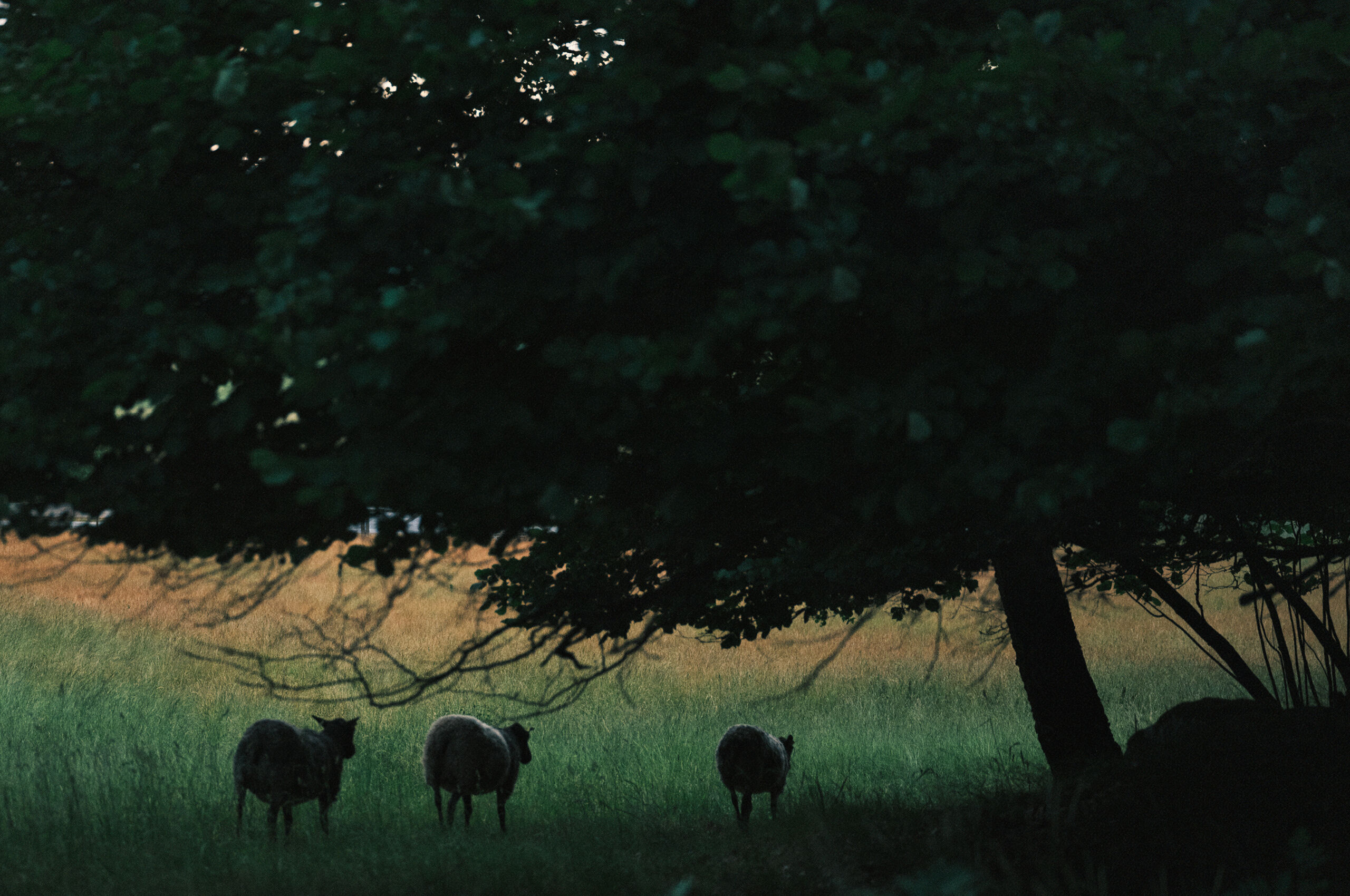
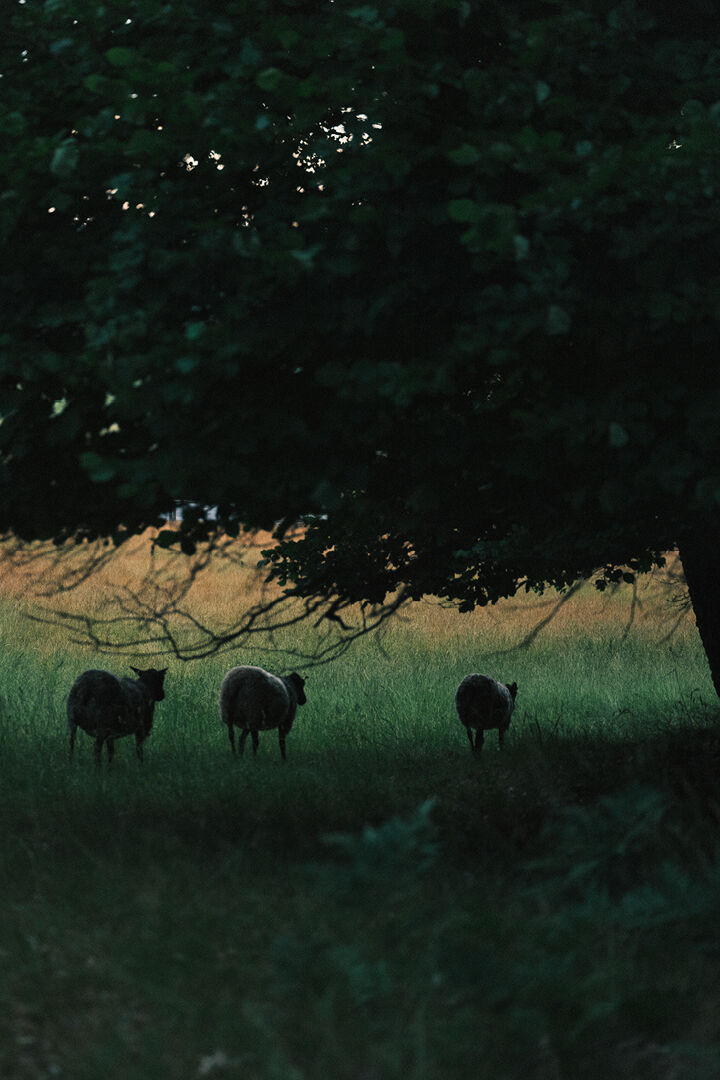
We’re committed to tracing each garment back to its origin, and to sharing this journey transparently with our community.
Traceability and transparency are the foundation of everything we do at Filippa K.
The more we know about the full journey of our products, the more we can work on improving our environmental and social impact.
Here’s what we’re working towards for 2025:
of all garments are traced to the fibre’s country of origin
Today, 29% of our styles have a material certification which means we can trace it back to the country of origin
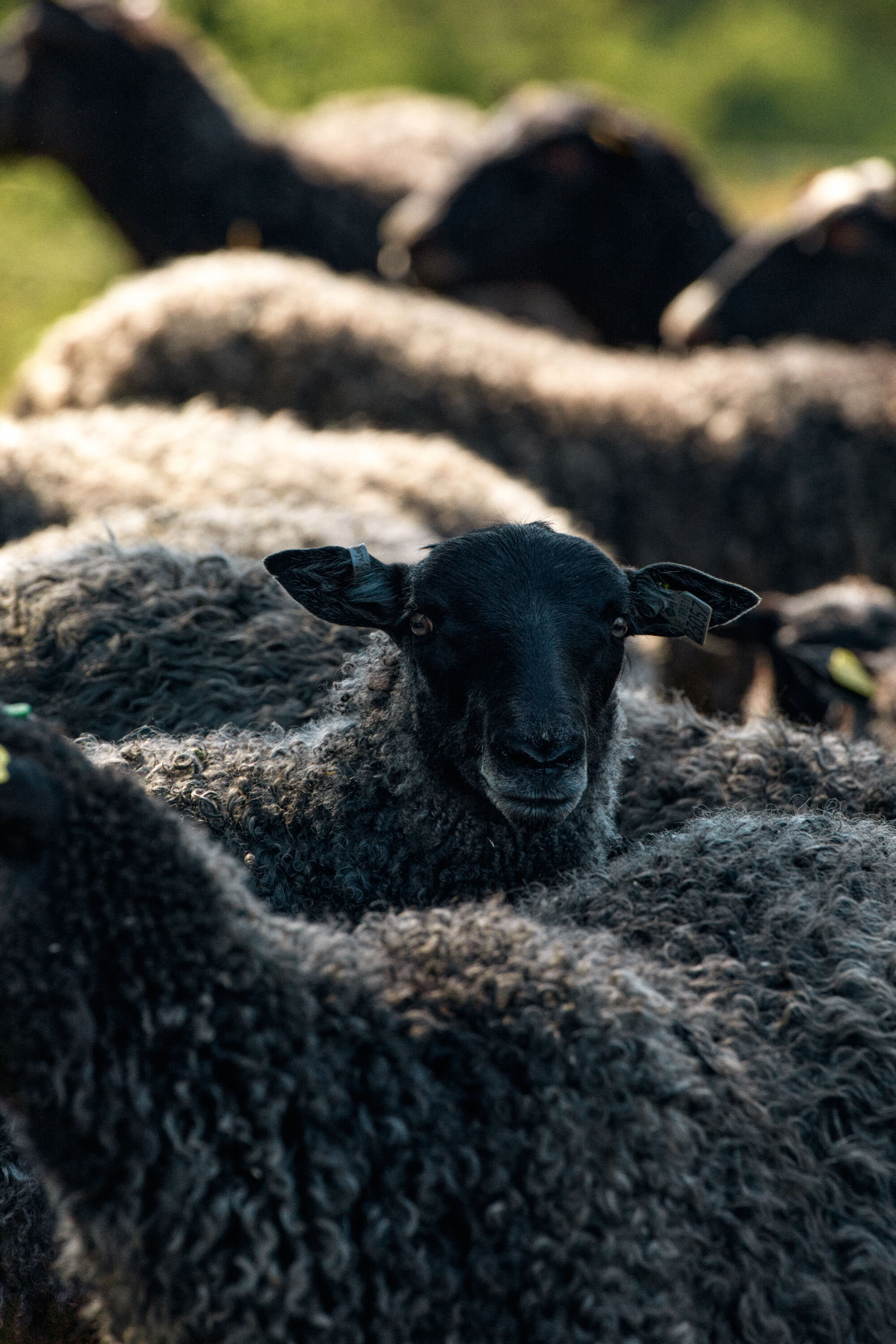
Simply put, our supply chain is made up of four tiers – each with a different step in the process of making a Filippa K garment.
We currently have:
RAW MATERIAL SUPPLIERS
Tier 4
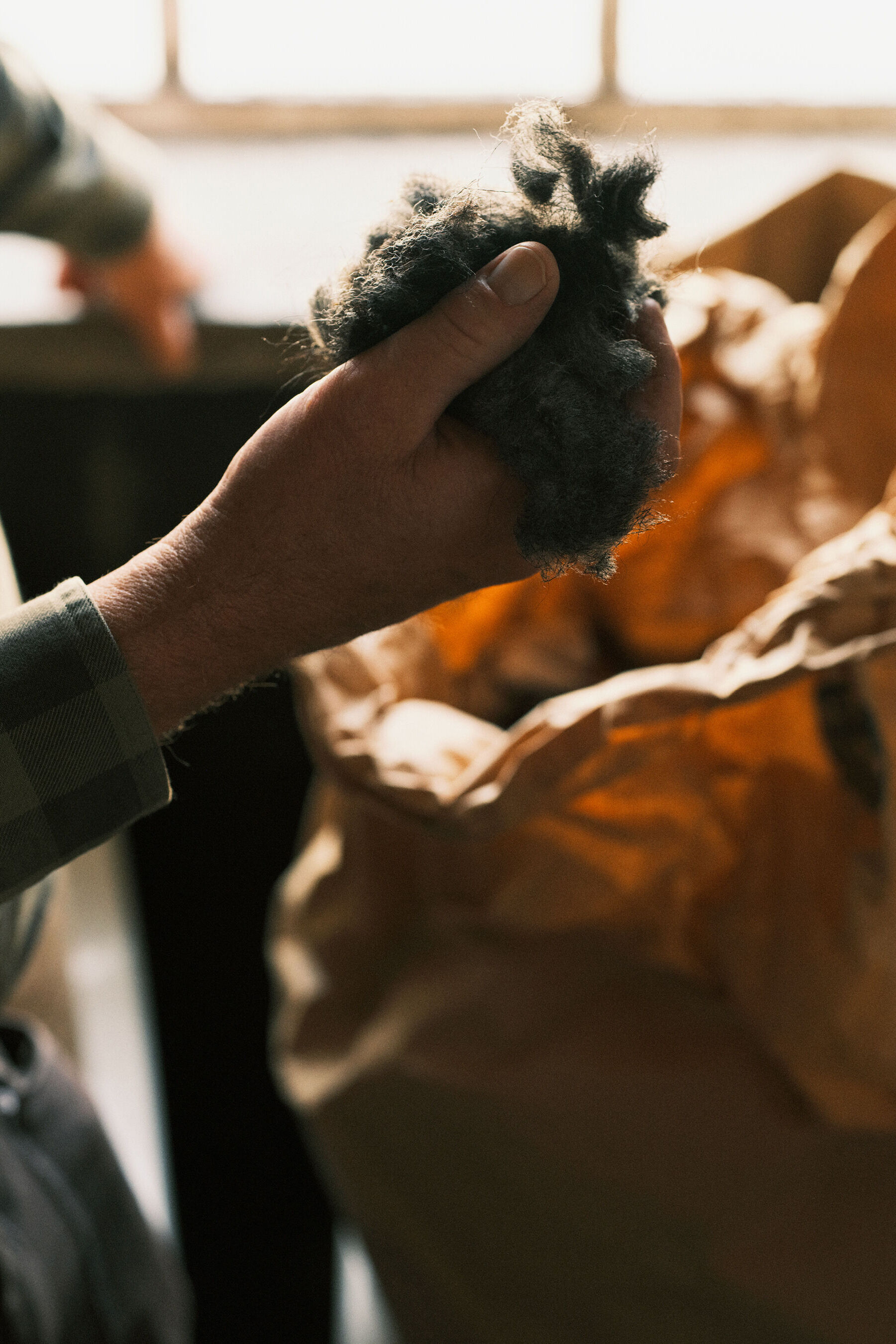
Gathering the raw materials from their source.
SWEDISH WOOL SWEATER:
The wool is collected by Klippan Yllefabrik and Västkustens Ullinsamling from Swedish farms. The sheep at these farms are a breed called FinDor, a cross between Dorset and Finull sheep.
RAW MATERIAL PROCESSING SUPPLIERS
Tier 3
.jpg)
Processing raw materials into yarn and other items.
SWEDISH WOOL SWEATER:
The wool is cleaned and combed at Poltops in Poland.
MATERIAL MAKER SUPPLIERS
Tier 2

Producing and finishing the fabric and trims that go into the finished product.
SWEDISH WOOL SWEATER:
The wool is spun into a yarn and dyed at Vernitas in Lithuania.
PRODUCT MAKER SUPPLIERS
Tier 1
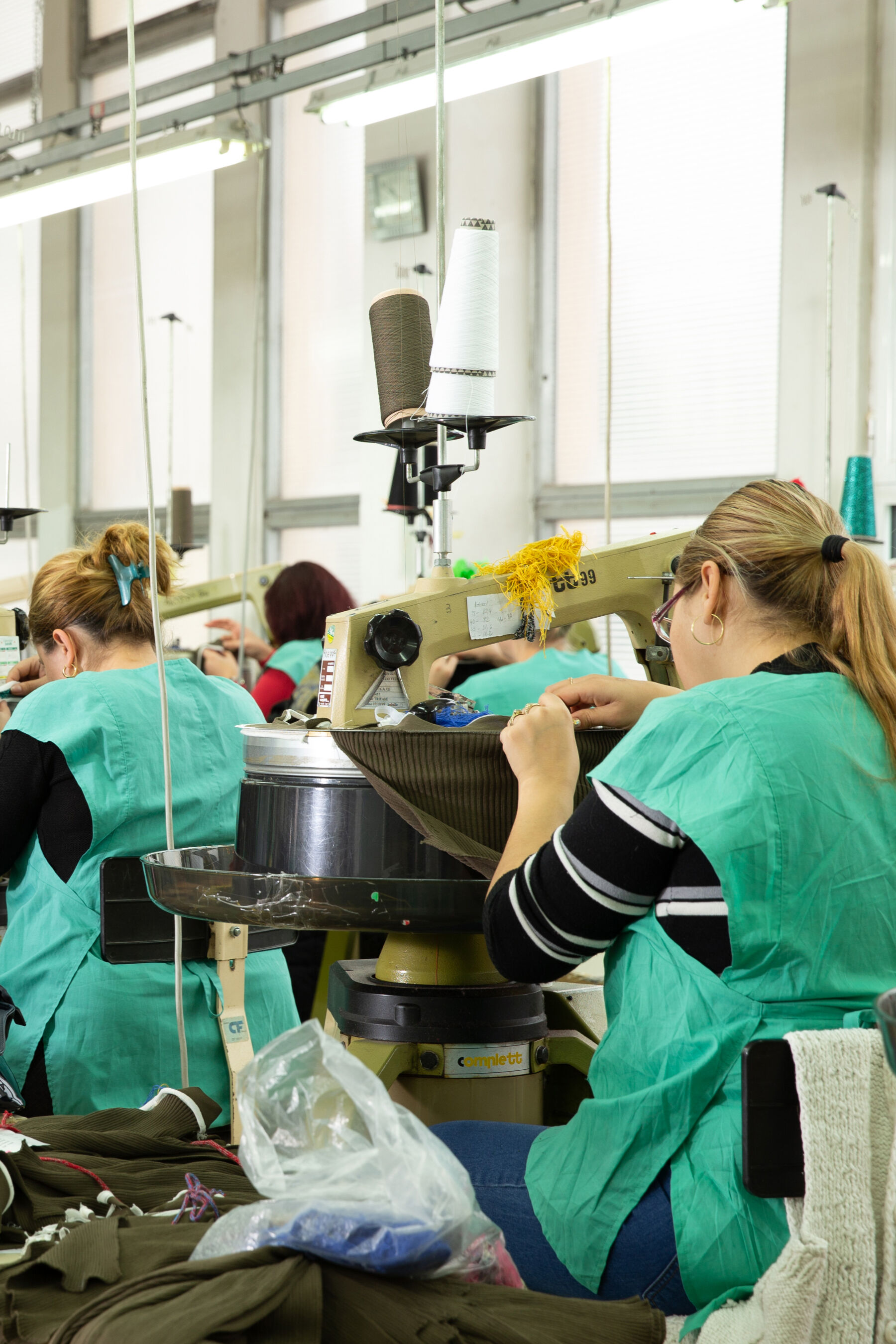
Assembling the finished product.
SWEDISH WOOL SWEATER:
The yarn is knitted into the Swedish Wool Sweater at Trico Point in Romania.
Get to know our global network of suppliers – the people behind your favourite Filippa K pieces.
Garment maker suppliers (Tier 1)
100% of suppliers traced
Filippa K production (Tier 1) per region
- 85% in Europe
- 15% in Asia
*Based on 2023 data
- Elena Fashion LDT
- Geana LTD
- Artigiani Veneziani SRL
- Asia SpA
- Incom spa Industria Confezioni Moderne
- Italian belt
- Italian Woolen Treasures Srl
- Manifattura BIG s.r.l
- Zetabi Srl.
- Audanta
- BALTIC SEWING COMPANY
- BONITANA
- Edlonta UAB
- Eisiga UAB
- IS FASHION BALTIC, UAB
- LTP Lithuania (Uab LTP)
- Regval UAB
- Rodvikas UAB
- Roze UAB
- Tekstona UAB
- Tuma UAB
- UAB Aloveks
- A. Pires Confecoes Lda
- BECRI – Malhas e Confecções
- Bermasi Fashion
- Calcado Samba S.A
- Canto Novo - Texteis Lda
- Carvalho & Braga Lda
- Confeccoes Luciana & Sousa, Lda.
- Confeccoes Manuela & Pereira
- Confetil Clothing Textiles S.A.
- Dieba - Fabrica de calçado ,lda
- Emar Malhas E Confeccoes
- F.A.R. Agencia de Comercio por Grosso de Texteis LDA
- Fabrica De Malhas Reistex, LDA
- Flaj calçados ,lda
- José Goncalves Ribeiro & Filhos, Lda
- Luis Brito Texteis Lda
- Maghalaes & Filhos Lda
- Pedro Portuguesa fabrica de calcas.Lda
- Playvest S.A
- Resende Nunes & Graca Lda (AXN)
- Rolando da Cunha Melo SA. (RCM)
- Titulos & Rubricas Lda.
- Volta Inesperade - Confeccoes Lda
- Ro-Design SRL
- S.C. Maglierie Cristian Impex SRL
- S.C. Trico Point srl
- Simiz Fashion
- DEMİRIŞIK TEKSTİL VE KONFEKSİYON SAN.TİC.A.Ş.
- Gurmen Giyim San. Ve Tic. A.Ş.
- MERGER TEKSTIL SAN.IC.VE DIS.TIC.LTD.STI.
- Süedmod Dericilik Konfeksiyon
- Dongguan Aosi Garment Co., Ltd Qiaozi branch factory (Austra)
- Sihong Fashion (Zhongshan) Co. Ltd. (Neo-Concept)
- Huizhou Guixiang Knitting Co., Ltd
- Hangzhou Hangsi Fashion Import and Export Co., Ltd Shenzhen Branch (HS Shenzhen)
- Autron Industry Company Ltd.
- Yuma labs
- Orient Fashions Exports(India) Pvt.Ltd.
- DEUTSCHE BEKLEIDUNGSWERKE CO., LTD
- SUNTOP VIETNAM Co., Ltd
About the supplier
This manufacturer is one of our longest-standing supplier relationships. Owned by Mr. Luis Brito, the organisation is committed to reducing their environmental impact. They help brand partners make informed decisions regarding materials and processes, finding sustainable solutions through practices such as certifications, local sourcing, upcycling, solar energy and 3D prototyping.
“Working with Filippa K's team has been an absolute pleasure. Their knowledge, flexibility, and unwavering focus on finding sustainable solutions have made problem-solving a seamless process. Each time we see Filippa K's styles online or in-store, it stirs a sense of pride and accomplishment. We've been part of something truly special, and it's a remarkable path we've travelled together.”
– The Luis Brito team
Luis Brito has been a Filippa K partner since 2000.
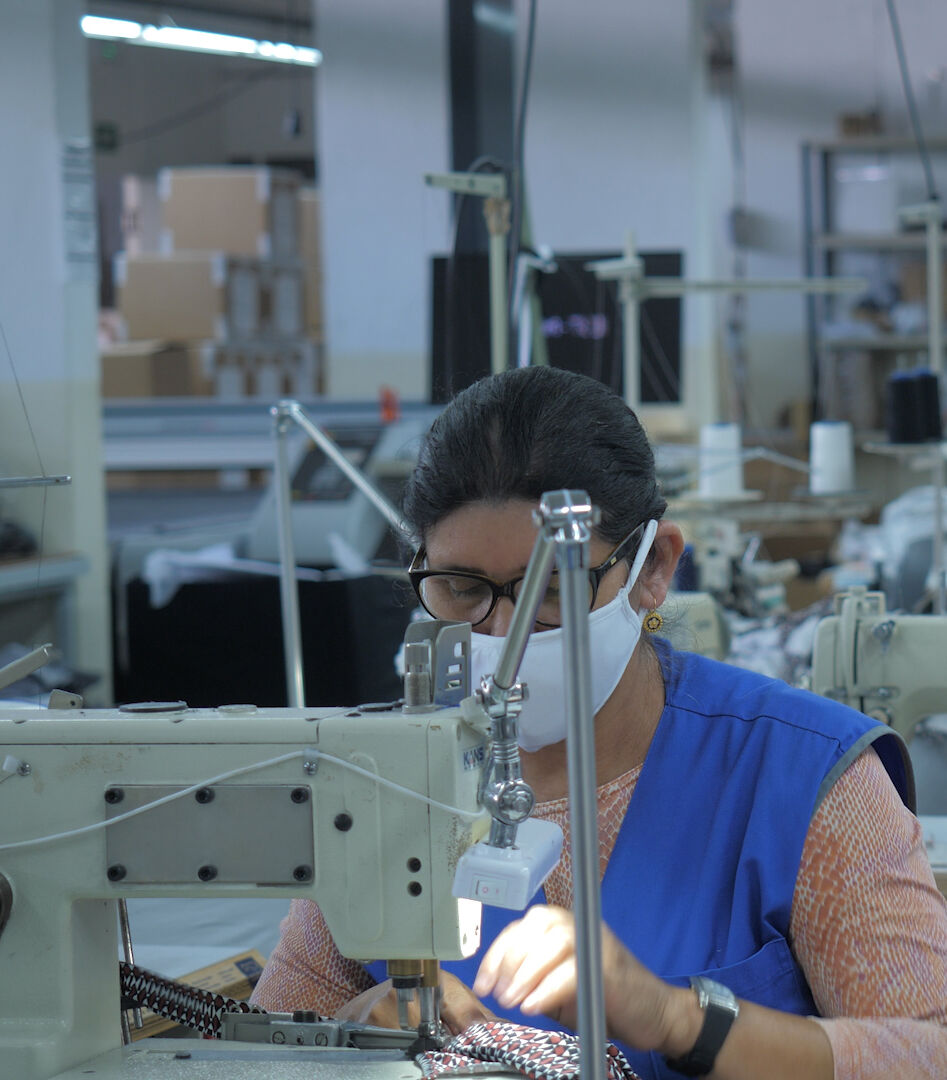
About the supplier
This family-run factory is owned by two brothers from Italy, who have taken over from their father. Stefano and Tommaso Paolin and their team are committed to sustainable practices – the factory is certified with the responsible animal fibre standards, and is working closely with Filippa K on a wool traceability project.
Trico Point has been a Filippa K partner since 2021.
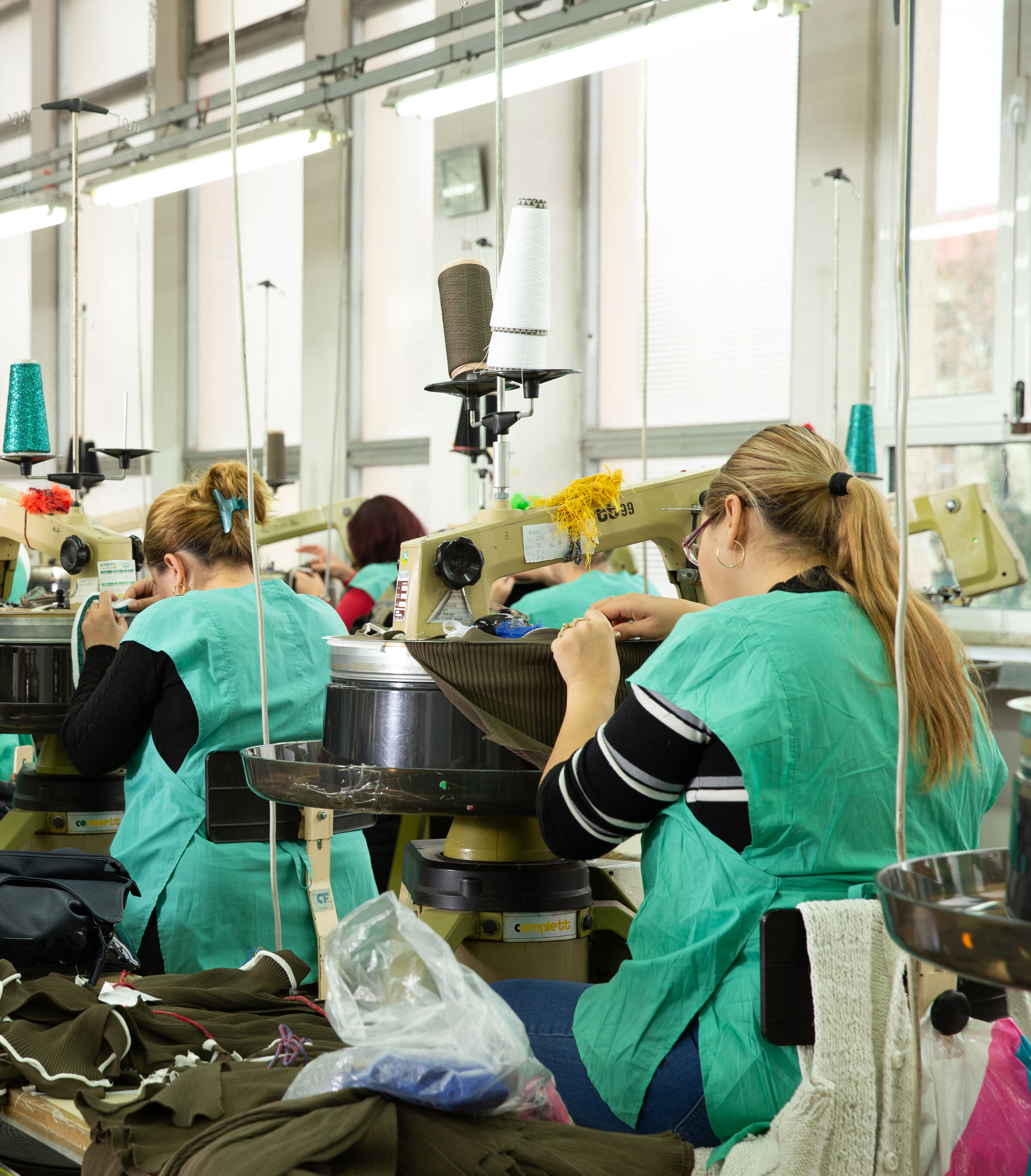
About the supplier
This small factory in China is owned by Lily, who oversees approximately 100 employees. Lily and her team are committed to working with Filippa K on consistent training around and improvement of the factory’s labour rights.
HS Shenzen has been a Filippa K partner since 2018.
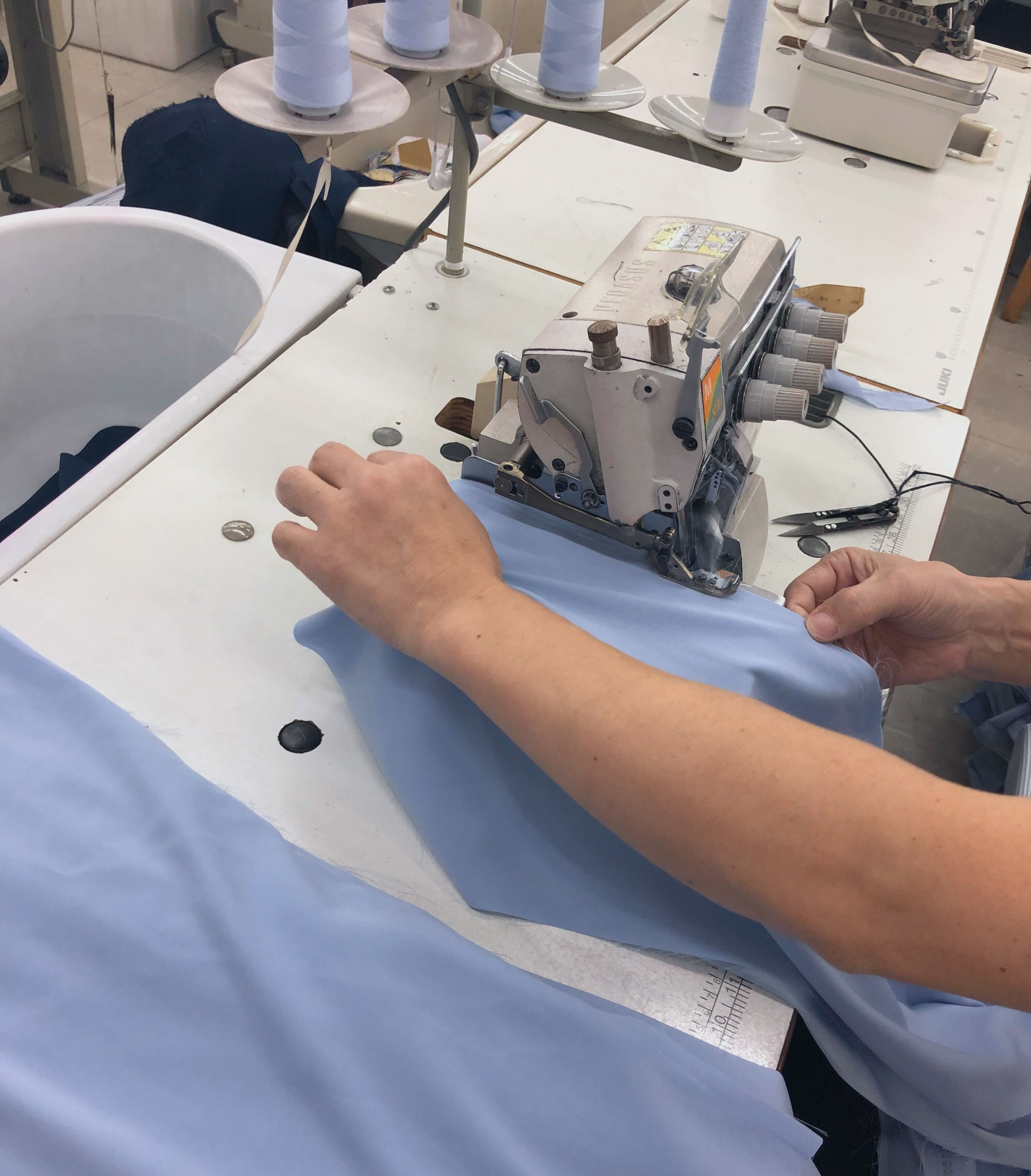
Filippa K is collaborating with Axfoundation and industrywide stakeholders such as GS1 Sweden and VirtualRouteZ, on a new project: the Fibre Traceability Initiative.
The goal is full traceability and transparency throughout the wool value chain, using QR codes to track the wool back to its origin. This will allow us to measure our emissions more accurately, support upcoming EU regulations for Digital Product Passports, and give our customers direct knowledge of where their garments come from.
Customers will simply be able to scan the code on their phones to instantly see the piece’s origins, care advice, and second life solutions.
The Autumn/Winter 2024 collection will be the first to debut the new QR codes – stay tuned.
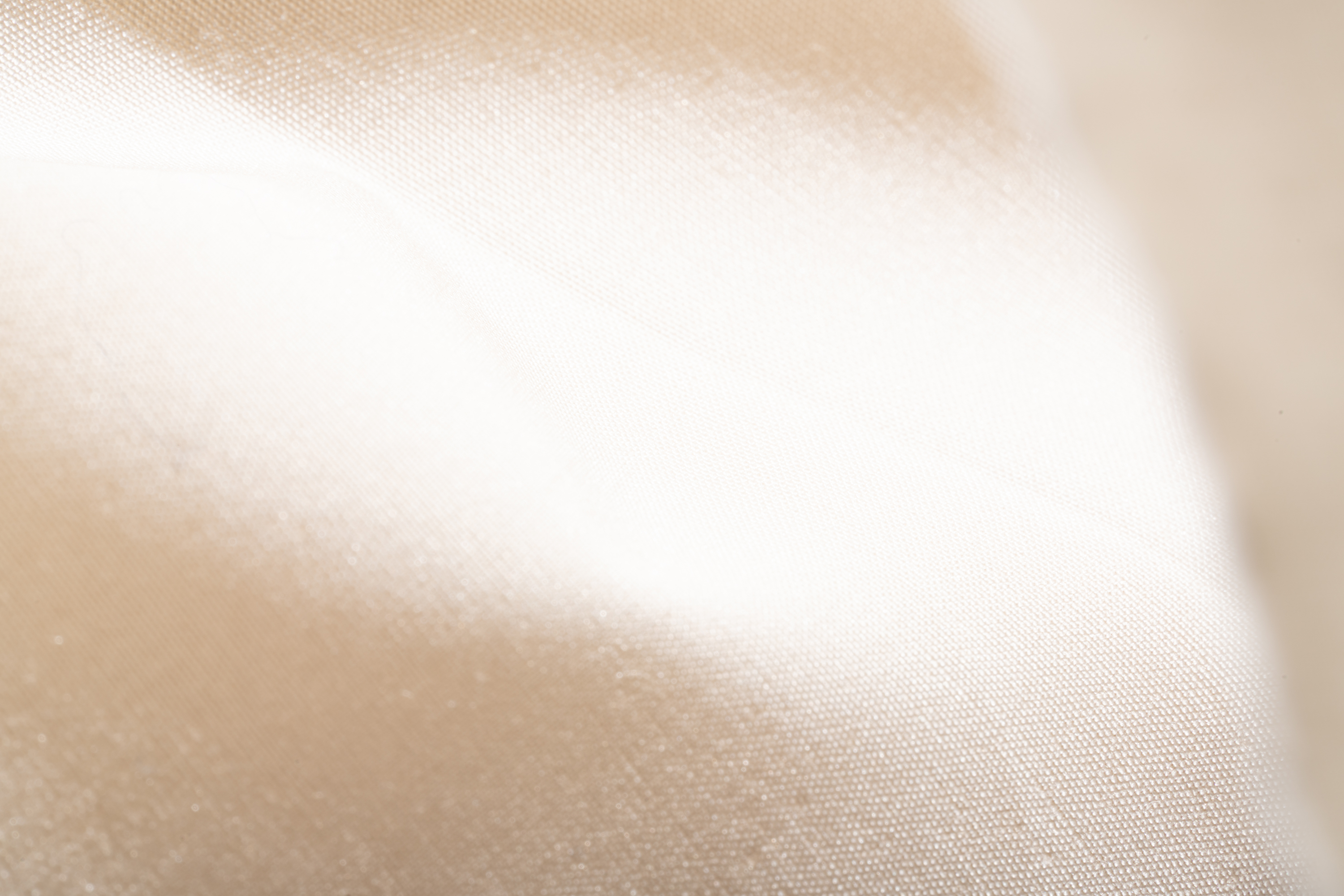
We focus on quality and longevity when sourcing materials, so we can maximise the number of wears for each garment. We also aim to use local, certified and recycled materials where possible.
We collaborate with our network of suppliers to source the best materials for every Filippa K product in terms of aesthetic, comfort and performance.
The fashion landscape is constantly evolving – we strive to partner with innovators in the industry to explore new ways of working that support a circular economy and have a positive, long-lasting impact.
Here’s what we’re working towards for 2025:
of all materials used in our ready to wear collection are either recycled, regenerative, certified, or innovative
Current progress: 48%
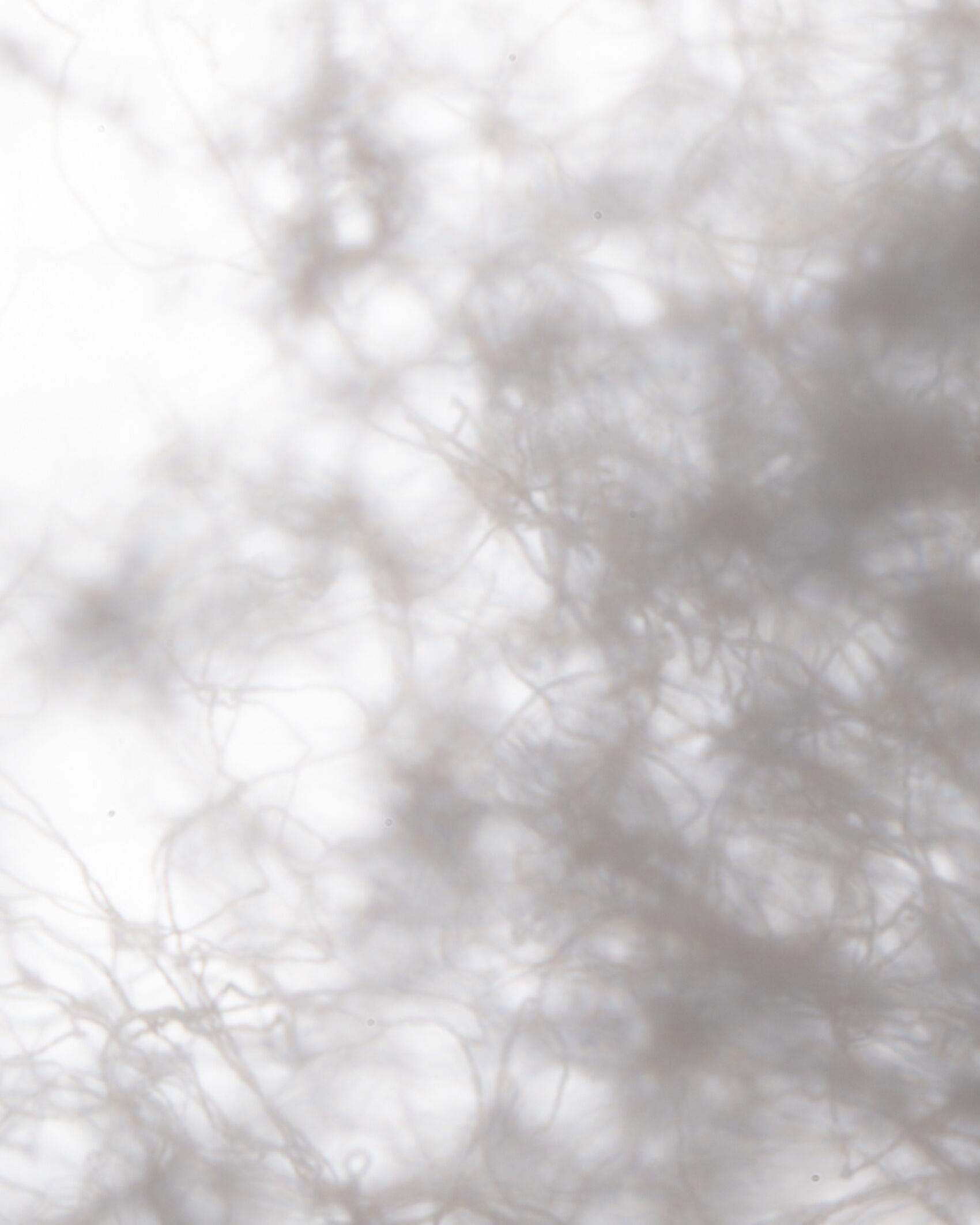
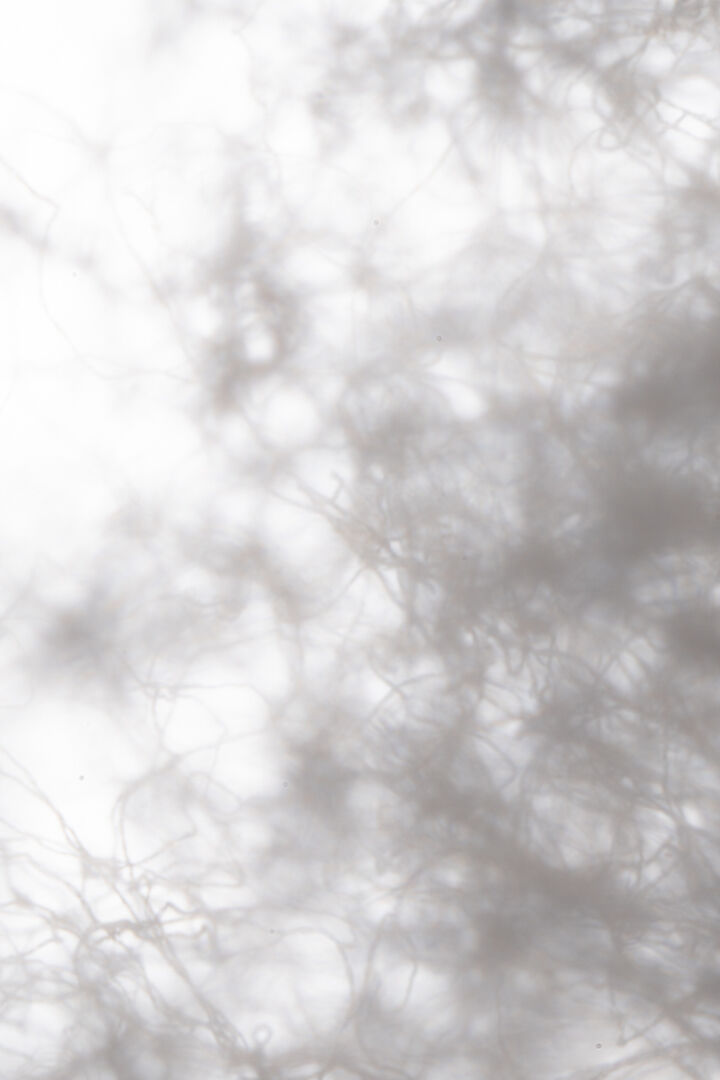
We approach our material choices from a holistic perspective, opting for fibres that meet our standards of quality and longevity while aiming to increase our share of recycled, certified and innovative materials.
NATURAL FIBRES
Plant and animal fibres make up the majority of our collections. These include plant-based fibres such as cotton and linen, as well as animal-derived fibres such as wool, alpaca and yak hair. By sourcing natural materials, we are able to develop products that have long-lasting quality, can be biodegradable, and are a renewable resource. Some challenges of sourcing natural fibres include a negative impact on animal welfare, soil health, water and biodiversity if production processes aren’t executed properly. We do our best to ensure every fibre is responsibly sourced.
MANUAFACTURED FIBRES
Synthetic fibres and man-made cellulosics are also used in our collections. Using these fibres thoughtfully helps to support the durability, comfort, and performance of our garments.
Some challenges of using synthetic fibres include high energy production practices that require the use of chemicals, and a risk of deforestation if wood pulp is not sourced responsibly.
Synthetic fibres include polyester and rayon from fossile-based sources, while cellulosics are fibres such as viscose and lyocell that are made from tree pulp. The conversion process for cellulosics can be a highly polluting process, so we aim to use pulp from certified sources and processes where the solvents are recycled. We assess this through the "hot button" initiative by Canopy.
Explore our guide to learn more about the materials we love, and why we’ve chosen them for Filippa K pieces.
Cotton is a natural fibre that is derived from the cotton plant. We use it throughout our collections for its durability, breathability and ease of care – most commonly in wardrobe basics like denim and t-shirts.
Organic cotton
Organic cotton is grown without the use of chemicals, pesticides, synthetic fertilisers, or GMO crops. Less than 1% of the cotton grown in the world is organic. We aim to increase our usage of organic cotton, but due to the limited global supply of this fibre we are not always able to source it in the necessary yarn sizes.
Recycled cotton
Recycled cotton is derived from the scraps of textile manufacturing processes, cuttings, and discarded garments, which are then processed to create recycled cotton fibres. These become shorter and weaker after recycling, so recycled cotton is often blended with a non-recycled fibre for strength. We like to use recycled cotton in more durable pieces like denim and outerwear.
Linen comes from cellulose fibres in the stalk of the flax plant. Flax is a versatile crop, growing well in most types of soil regardless of quality.
As a fabric, linen is durable, naturally moth resistant, and stays cool in warm temperatures. The loose structure of linen gives it a relaxed look and breathable feel. It holds colour well which provides it with a lustrous shine. We use linen in a variety of pieces throughout womenswear and menswear, especially in spring and summer collections. Its light weight makes it ideal for shirts, t-shirts and trousers.
Wool is a natural fibre that is obtained from sheep and other animals: cashmere and mohair come from goats, and alpaca is from animals in the camel family. Wool is best known for its warming properties when it’s cold, but it is also temperature-regulating to stay cool when it’s warm. This is due to the structure of wool fibres, which enables them to trap air and absorb moisture without becoming damp. Each type of wool has unique properties. We use wool in knitwear, outerwear, suits and trousers.
Merino wool
Merino wool comes from the fleece of merino sheep, a breed known for its fine and soft wool. These sheep are primarily raised in countries with suitable climates for merino farming, including Australia, New Zealand, South Africa, and certain regions in South America. Merino is one of the finest types of wool – it is finer and softer than regular wool, yet it has the same temperature-regulating qualities. It is high in quality and can be spun into fine wire threads that create a breathable material. We use merino in lighter knitwear pieces, and for suiting fabric.
Recycled wool
Recycled wool is not directly derived from sheep or goats. Instead, it is made from reclaimed or recycled wool fibres obtained from discarded woolen garments or textile waste in production.
Swedish wool
In 2019, we worked with a local farm and another Swedish brand to develop a new supply chain that sources local Swedish wool: a raw and natural material. Sweden’s sheep provide over 1000 tonnes of wool each year, most of which goes to waste. We visited the farm Norrby Gård to learn about how we can turn this into a resource. We’ve continued to develop this supply chain, scaling up the project to involve more brands and partners. Each year we aim to introduce a new garment made from Swedish wool.
Mohair comes from the fleece of the Angora goat and the fibre is known for its lustre and shine. We source our mohair primarily from South Africa. The fibre has a soft and lightweight feel, and it provides a unique fluffy textured appearance that sets it apart from other types of wool. Mohair fibers are strong, contributing to the durability and longevity of garments made from this material. We typically use mohair in knitwear.
Alpaca wool comes from the fleece of the alpaca, a domesticated South American camelid. Alpacas are primarily found in countries like Peru, Bolivia, and Ecuador. This type of wool is renowned for its softness and is often compared to cashmere or mohair. The silky fibres are long (10-20 cm) and fine, giving it a softer and more durable quality than sheep’s wool. Despite being lightweight, alpaca wool has good insulation properties that keep the wearer warm in colder temperatures. We use alpaca in knitwear thanks to its hypoallergenic qualities, shrink resistance, and lightweight feeling.
Cashmere comes from the soft undercoat of cashmere goats, particularly breeds like the Kashmir goat. These goats are primarily found in regions of Central and South Asia. The fibre is renowned for its luxurious softness and is six times finer than human hair. Despite its lightweight nature, cashmere provides significant warmth which makes it a popular choice for winter clothing. Cashmere has natural breathability, allowing air to circulate while regulating temperature, providing comfort in various climates. However, it can be prone to pilling due to its natural properties. We use cashmere in our knitwear and outerwear fabric.
Yak wool is a luxurious fibre derived from the undercoat of the yak, found in the Himalayan regions of Central Asia. The wool they produce is valued for its warmth, breathability, and durability. Like other natural fibres, yak wool has natural breathability, allowing moisture to evaporate while maintaining a comfortable temperature. The fibre is also naturally hypoallergenic, making it a suitable choice for individuals with sensitive skin. We use yak wool in our knitwear.
Silk is derived from the glands of silk-producing insects, particularly the silkworm. Silk fabric has a natural sheen that adds an elegant and glossy appearance to clothing. Although silk is a durable material, it is also sensitive to abrasion, light, perspiration and static. It is lightweight, soft to the touch and moisture-absorbing, which allows the wearer to feel cool in high temperatures and warm in low temperatures. When cared for properly, it can retain its qualities to last a long time. We use silk in woven pieces such as dresses, blouses, trousers and shorts.
Down comes from the soft underfeathers of ducks or geese. These are lightweight, fluffy, and have insulating properties – they create tiny air pockets that trap warm air, retaining the heat of the wearer. Down is incredibly resilient and can withstand being compacted many times without losing its loft or ability to fluff. Down also allows moisture to escape, contributing to breathability and helping regulate body temperature. We only design with two types of down: certified, which confirms animal welfare and that the down has not been plucked from live birds, and recycled down from post-consumer waste. We use down in our puffer jackets.
Leather comes from the processed and tanned raw hides of animals – most commonly cows, goats or lambs. The tanning process is essential as it preserves and strengthens the hides as well as making them more supple and pliable for a garment. Leather is highly durable and can withstand wear and tear, contributing to the longevity of clothing items. With proper treatment and wear, leather becomes more supple and comfortable over time, conforming to the shape of the wearer. We use it primarily in accessories such as bags and shoes, and occasionally in ready-to-wear pieces.
All the leather we source is a byproduct of existing food production.
Tanning
Vegetable tanning is a process that utilises tannins extracted from plant sources, such as tree bark. This method imparts a more natural, earthy colour to the leather. Chrome tanning relies on the use of chromium salts for the tanning process. This method results in a softer and more supple leather. While chrome tanning can be faster and more cost-effective, it raises environmental concerns due to the use of chemicals. Balancing the desired qualities of leather with environmental considerations is crucial in choosing between these two tanning methods. We aim to only source from tanneries that are certified according to the “Leather Working Group” (LWG), which covers their environmental performance and chemical management.
Viscose, also known as rayon, is a man-made fibre derived from natural sources, primarily wood pulp. The production comes from various trees, including beech, pine, and eucalyptus. It’s a sensitive fabric that is comfortable to wear, easy to wash, and retains colour well over time, but it can be prone to shrinking if not cared for properly. Viscose is used throughout our collections in dresses, blouses, and mixed into fabric for suiting. We are proud to use LENZING™ ECOVERO™ by Lenzing AG as one of our viscose qualities.
Lyocell is a man-made fibre derived from wood pulp, typically sourced from eucalyptus trees. It is comfortable to wear with a unique powdery texture and smooth feeling. It’s most commonly used in our jersey tees, dresses and men’s shirting. We are proud to use TENCEL™ Lyocell by Lenzing AG and TENCEL™ Lyocell with REFIBRA™ technology by Lenzing AG as some of our lyocell qualities.
Modal is a man-made fibre derived from beechwood pulp. Its characteristics are similar to those of cotton, although modal is more resistant to pilling and more absorbent. It is often used as an alternative to, or blended with, silk or cotton. Modal will not shrink when it’s washed, and it retains colour very well. We use it in both jersey and woven products, and often in materials where it’s mixed with other fibres. We are proud to use TENCEL™ Modal by Lenzing AG in some of our products.
Cupro is a cellulose fibre made from cotton linter, which is a by-product of the cotton industry. The fine, silky fibres are produced using a closed-loop process. The material is soft to the touch with many functional properties: it controls moisture and stays breathable, making it warm to wear in the winter and cool in the summer. The consistency of the fibre can absorb dye well, meaning the colour stays vibrant for longer. We use cupro in the lining of some of our products such as suiting and outerwear. We also use it in woven pieces like dresses and shirting.
Acetate is often considered as a semi-synthetic fibre, because it is made from cellulosic origins derived from wood pulp or cotton linters mixed with acetic acid. The wood pulp used in acetate production is typically sourced from fast-growing trees. Acetate is soft and delicate providing drape, flow, and a slight sheen to the styles that it is used in. It’s often mixed with other fibres for strength and durability. Acetate and triacetate are very similar: they are both semi-synthetic fibres with luxurious characteristics, but the distinction in their chemical structure leads to differences in properties. We use acetate in jersey styles like t-shirts and dresses. We are proud to NAIA™ acetate by Eastman in some products, which is made from certified pine, eucalyptus and recycled content. The production process is a closed loop, where solvents are recycled back into the system for re-use.
Triacetate is often considered a semi-synthetic fibre, because it is made from cellulosic origins derived from wood pulp or cotton linters mixed with acetic acid. Triacetate has a relaxed, flowy feeling and is a long-lasting and durable material that maintains its properties for years of wear. It resists shrinking and wrinkling (so it doesn’t need much ironing), dries quickly, is machine washable, and doesn’t pill or produce static. Acetate and triacetate are very similar: they are both semi-synthetic fibres with luxurious characteristics, but the distinction in their chemical structure leads to differences in properties such as wrinkle resistance. Triacetate is often chosen when enhanced wrinkle resistance is desired in clothing. We often blend triacetate with other fibres, and it can be found in our dresses, blouses, trousers and jackets.
Polyamide, commonly known as nylon, is a synthetic polymer derived from oil. Nylon is known for its high strength and durability, making it a robust material for clothing. It can withstand wear and tear, making it suitable for activewear, hosiery, and outerwear. Nylon has moisture-wicking properties and dries quickly, making it suitable for activewear and outdoor clothing. We use polyamide for leggings and tops as well as in functional outerwear.
Recycled polyamide
Recycled polyamide is derived from used textiles, industrial waste, or other nylon products. The recycling process involves breaking down the existing polyamide into its raw form to create new fibres.
Polyester is a synthetic polymer derived from oil. The material is very durable, tear-proof and abrasion-resistant, though it can be prone to pilling. It is designed to absorb moisture but not retain it which makes it ideal for activewear garments. We use polyester for long-lasting outerwear pieces and blended with wool in knitted garments for increased durability.
Recycled polyester
Recycled polyester is currently derived from post-consumer PET (Polyethylene Terephthalate) plastic bottles or post-industrial waste. The process involves collecting, cleaning, and processing used plastic bottles into polyester fibres. These hold the same qualities as virgin fibres. There are no technologies at scale which can create recycled polyester from textile waste, but we continue to follow industry development while aiming to source from the textile value chain.
Elastane, also known as spandex or Lycra, is a synthetic fibre derived from oil. The incorporation of elastane in clothing enhances comfort by allowing freedom of movement due to its elastic properties. We use elastane for performance benefits in our activewear, and in pieces like trousers, suits, and dresses where comfort stretch improves the garment and increases wearability.
Today, clothing containing a high percentage of elastane is not recyclable as commercial technology to separate elastane from other fibres does not exist. We keep this in mind when we decide to add elastane to our garments, as we consider the end of life of our pieces during the design process.
Within the categories of natural and manufactured fibres, we are working towards ensuring as many materials as possible are certified, traceable and recycled.
We’re also looking into regenerative agriculture as a solution to benefit biodiversity, water availability, climate resilience and livelihoods.
Get to know some of our preferred materials, or explore our list of certifications.

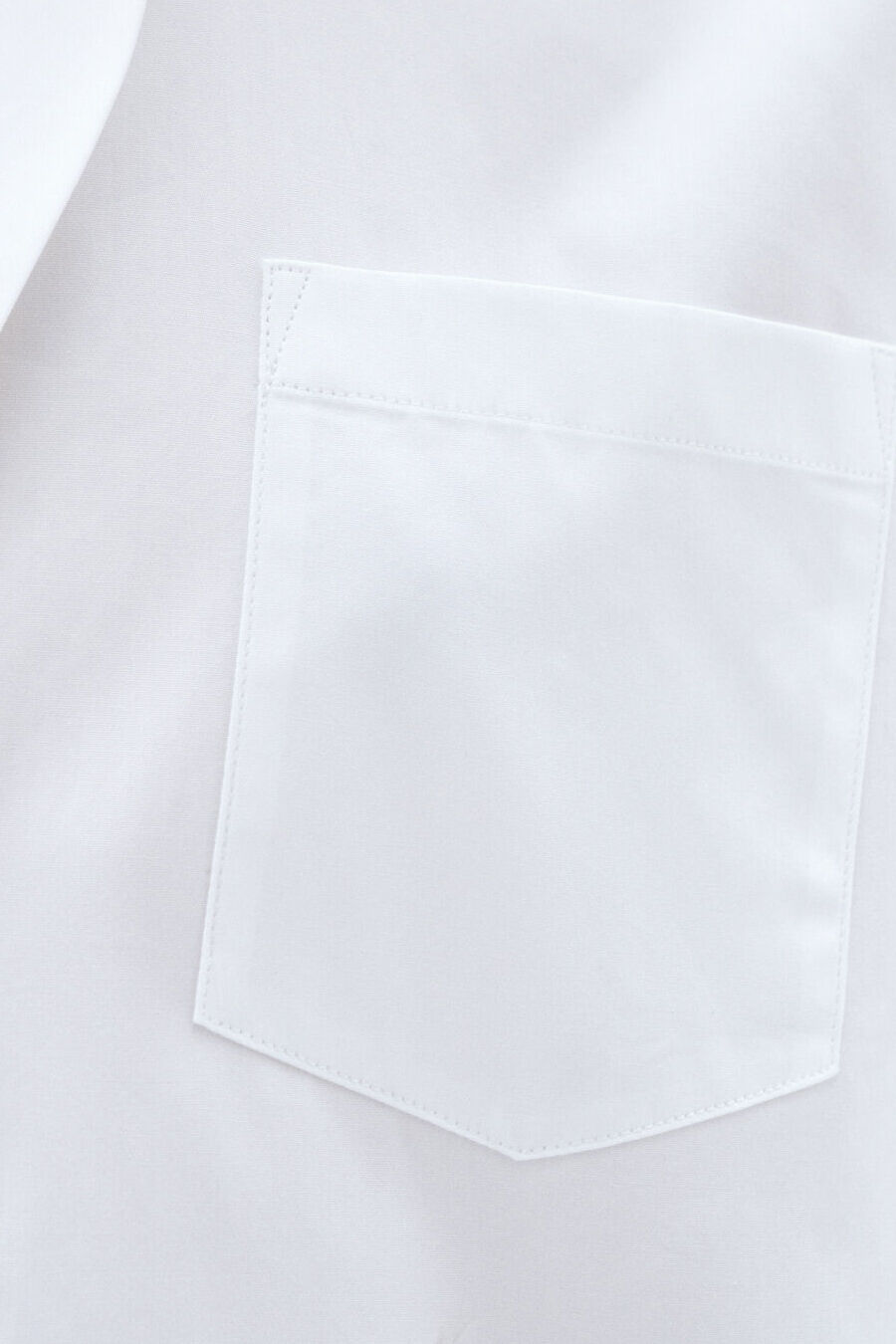
Material certifications give us confidence that the fabrics we use are fully traceable, and come from origins that have high welfare and social standards.
They ensure that the full supply chain handles the certified material in a separate process to the conventional material, and that the products are produced according to the certification’s standards.
Over the years, we’ve worked proactively to ensure the mohair we use is held to the same sustainability standards as other animal products. In 2019, Filippa K partnered with brands John Lewis and Acne Studios to visit farms in South Africa. This supported the work of Textile Exchange and Mohair South Africa in developing the first Responsible Mohair Standard, which is now used by brands and suppliers worldwide.








FILIPPA K IS CURRENTLY CERTIFIED IN:








Each year we collaborate with partner organisations that are at the forefront of sustainability in fashion, pioneering new developments in material technology to reduce the need for virgin materials, energy, water and chemical consumption.
The innovative materials support circularity by utilising products that would otherwise go to waste or be downcycled. By supporting these processes, we hope to contribute to a more circular fashion industry.
Explore the innovative fibres we’ve debuted and included in our collections.
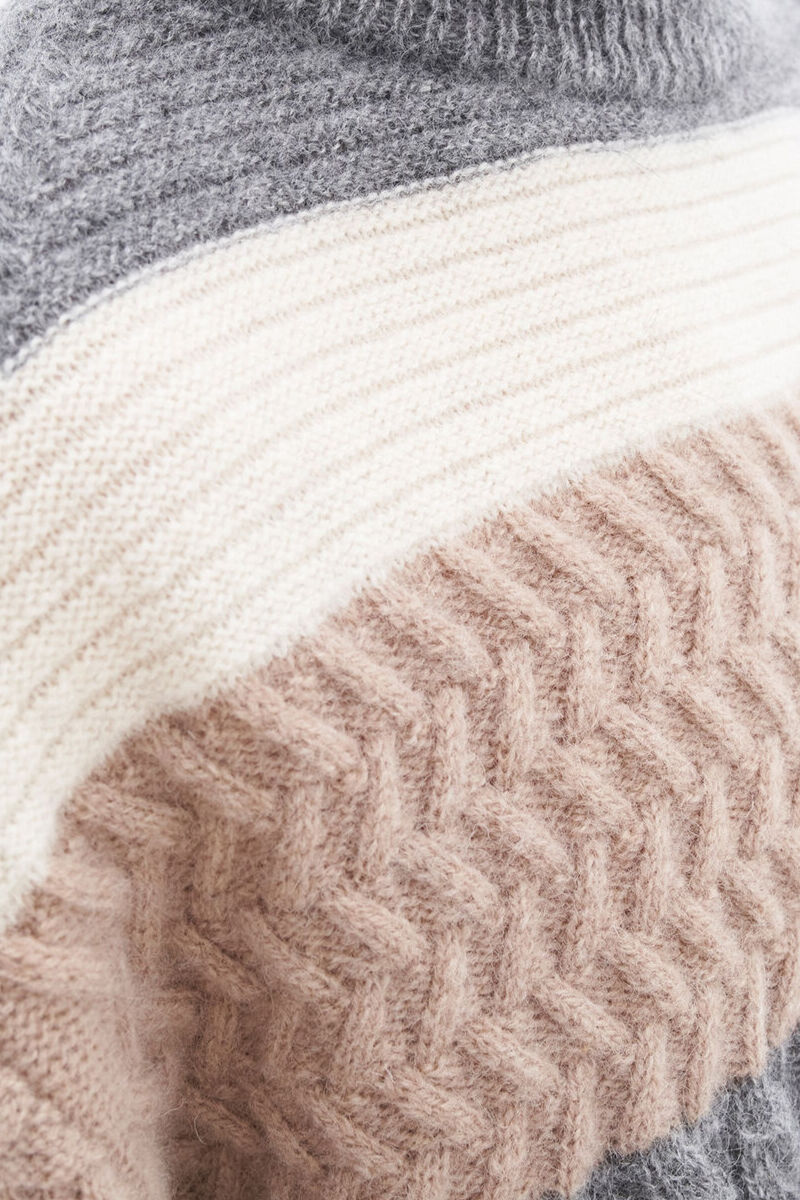
-9.jpg)

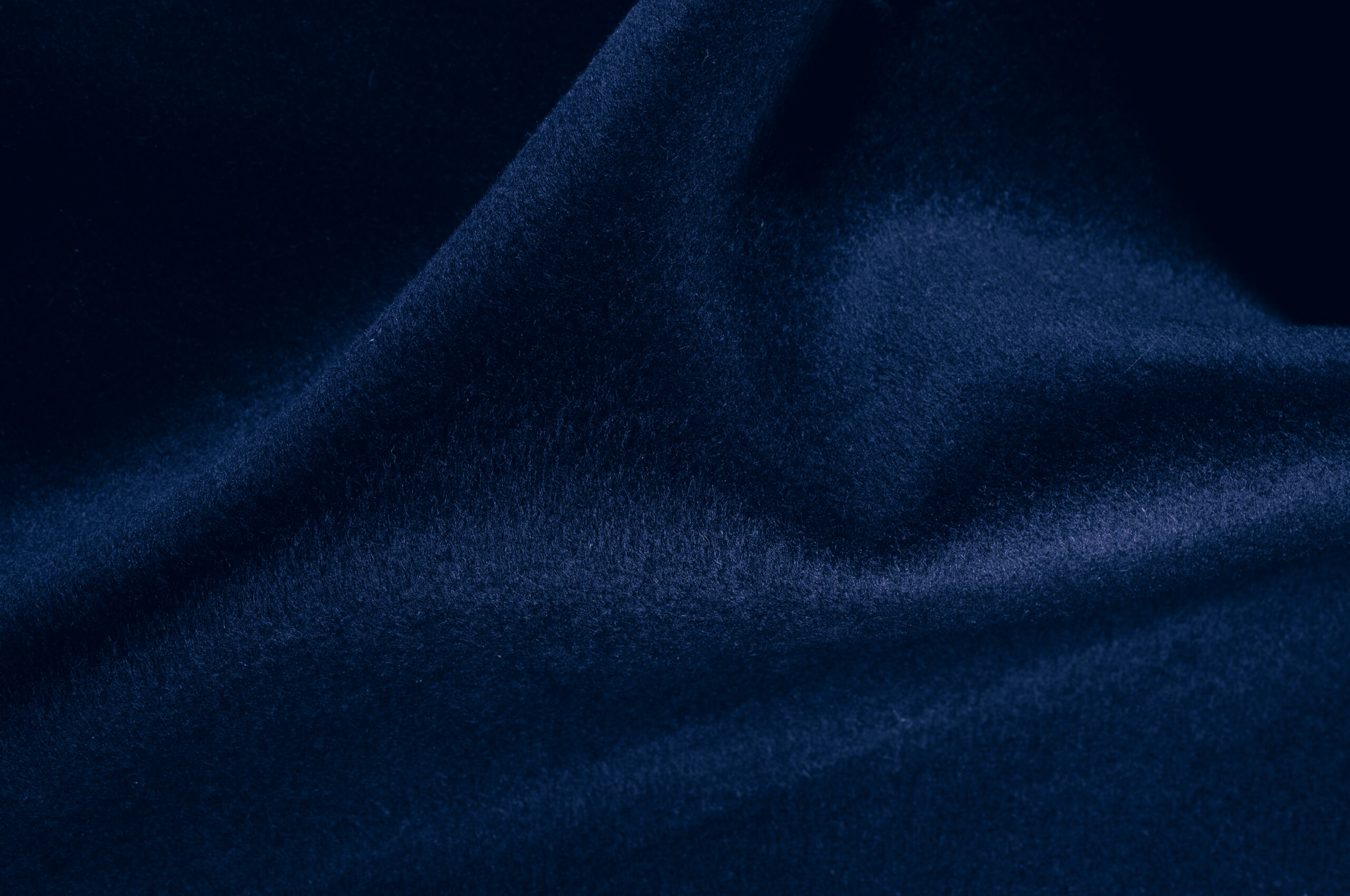
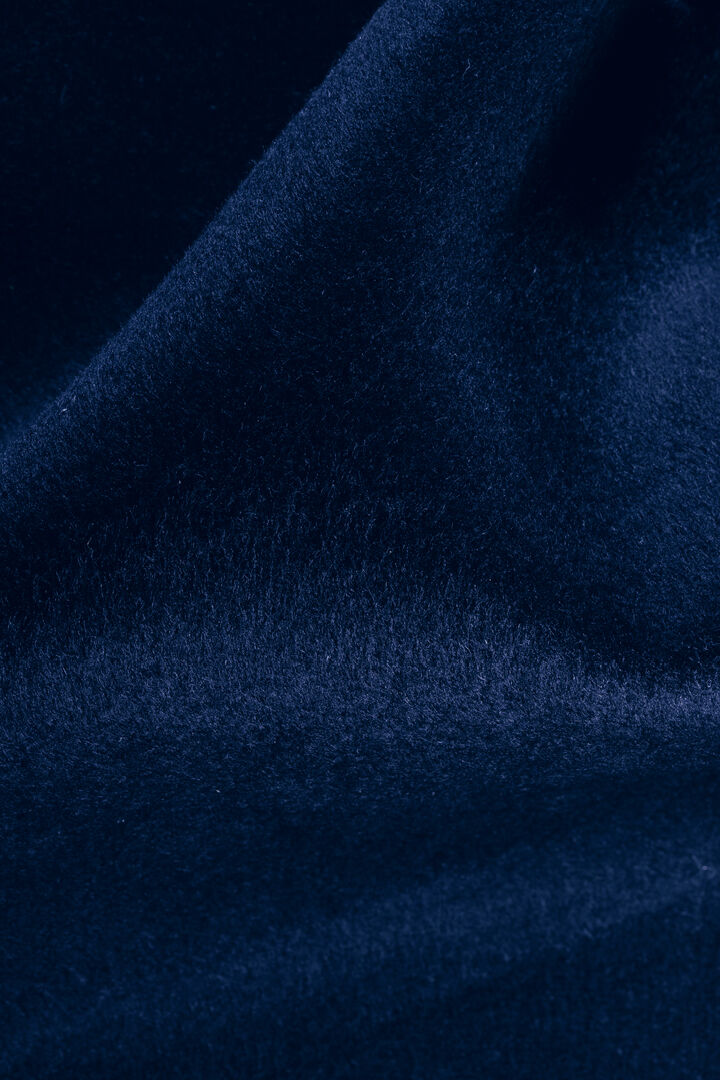
We take a circular approach to design that considers the full lifecycle of each product.
Circularity is central to minimising our environmental footprint and encouraging mindful consumption.
We consider the full lifecycle of our products from design and production, to the user phase, and on to its second life.
We also contribute to circularity by using recycled materials, supporting material innovations, providing garment care guidance, and offering a resale platform for our customers in Sweden.
Here’s what we’re working towards for 2025:
- We are currently re-working our goals in the areas of longevity and circular design, and will update this section as soon as they are set
- A key focus for the year ahead is improving second life solutions: resell, repair and recycling
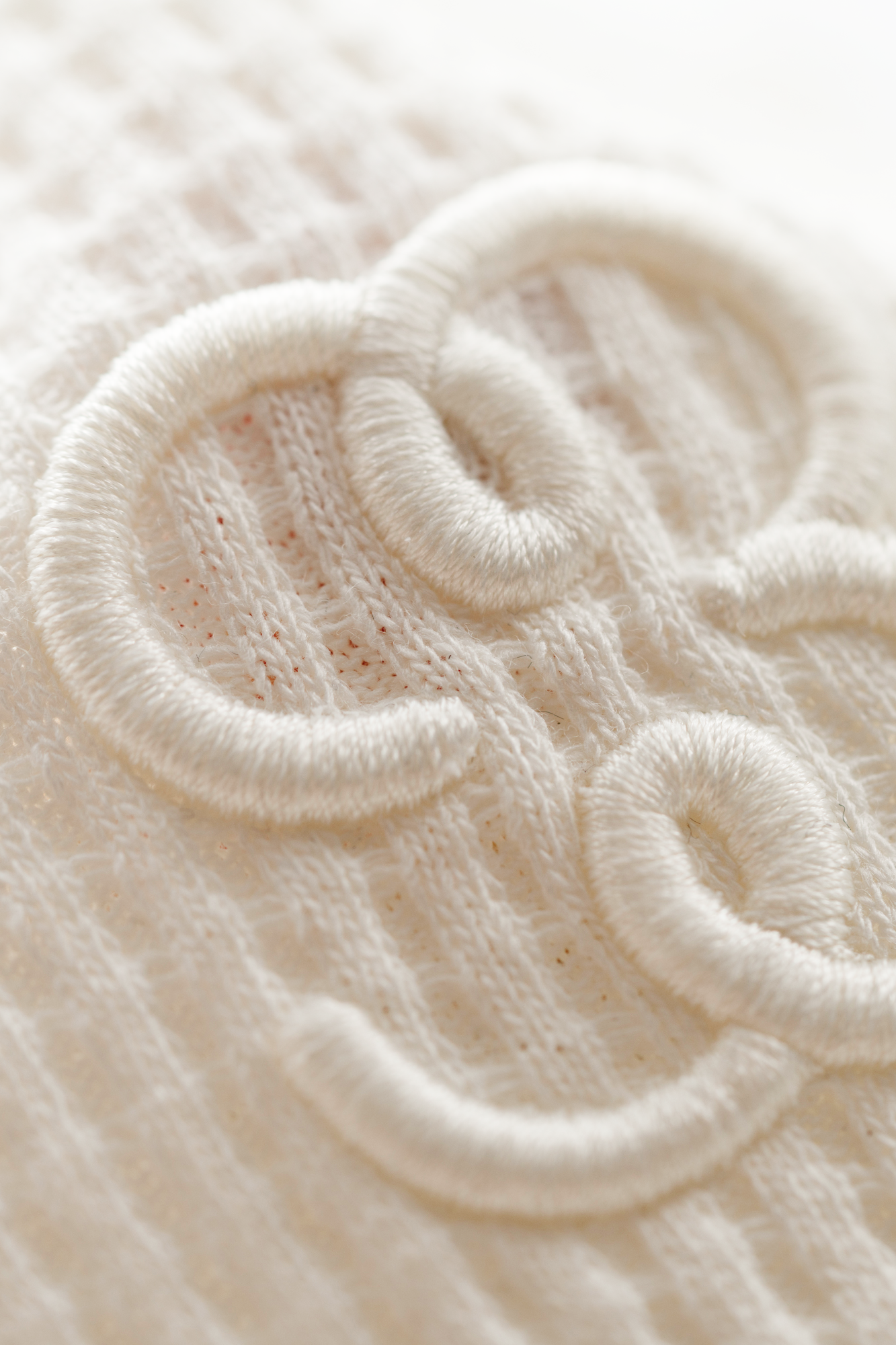
Our responsibility to the clothing we make goes beyond the creation phase: for every Filippa K piece, we consider circularity from design and production, through to the user phase, and on to second life solutions when the wearer is finished with the garment.
Material choices
At Filippa K we always design for longevity. This starts with the material – opting for choices that are certified, recycled or innovative, and that look and feel great.
We create timeless styles that are versatile and can be worn again and again, with the aim of keeping the garments in use for as long as possible. This is at the heart of our Core Collection philosophy: a permanent range designed with the essential elements of a staple wardrobe in mind – quality materials, versatile use, timeless style and effortless fit.

By storing garments properly and keeping their unique structure in mind, you can prevent them from losing shape or becoming damaged.
Knitwear
Lay your sweaters flat to dry, and store by folding and stacking neatly. This helps to avoid stretching and sleeve marks.
Shirts
Shirts and blouses are best kept in a closet on wooden hangers. Hanging helps the fabric stay fresh and wrinkle-free.
Trousers
Tailored trousers should be hung on a trouser hanger, folded along the crease (rather than the seam). This helps to preserve the crease and prevent wrinkles.
Maintaining your clothing is the key to making them last, and mending is a simple way to avoid replacing them.
Pilling
Many natural fibres, particularly in knitwear, will start to pill over time. This is a normal process and can be easily removed by hand or with a device.
Spot cleaning
Treating a stain directly as soon as it occurs can help prolong the time between a garment’s washes. Some garments, such as leather accessories and wool outerwear, are always best treated by spot cleaning rather than washing.
Steaming and Ironing
Steaming your garment is an easy way to remove wrinkles and give it a refresh. Some pieces can also be ironed, be sure to check the care label for specific ironing instructions.
Protect the material
Stretch fibres such as elastane and Lycra are sensitive to heat. Protect these garments by placing a damp cloth in-between when ironing, washing them inside out in a cold temperature.
Being thoughtful about the ways you wash and dry clothing is an easy step towards reducing energy, water and chemical use, as well as prolonging the life of your garments.
Always read the care label and try not to wash garments more than is necessary.
Aim to wash at a low temperature and on a low cycle, using a natural liquid rinse and a wash bag for garments with finer fabrics.
By finding a trustworthy tailor, you can have your garment repaired to extend its life and ensure it always fits you perfectly. Get in touch with our team for advice on finding a good tailor near you.
While a tailor can help with garment repairs, many small fixes such as a missing button or seam rip can be easily mended at home with a sewing kit.
We include extra trims with all of our garments, where applicable.
Personalise garments that seem beyond repair by getting creative – old fabric can be used as gift wrap, retro patches can cover up denim tears, or damaged knitwear can be worn over the shoulders as a scarf.
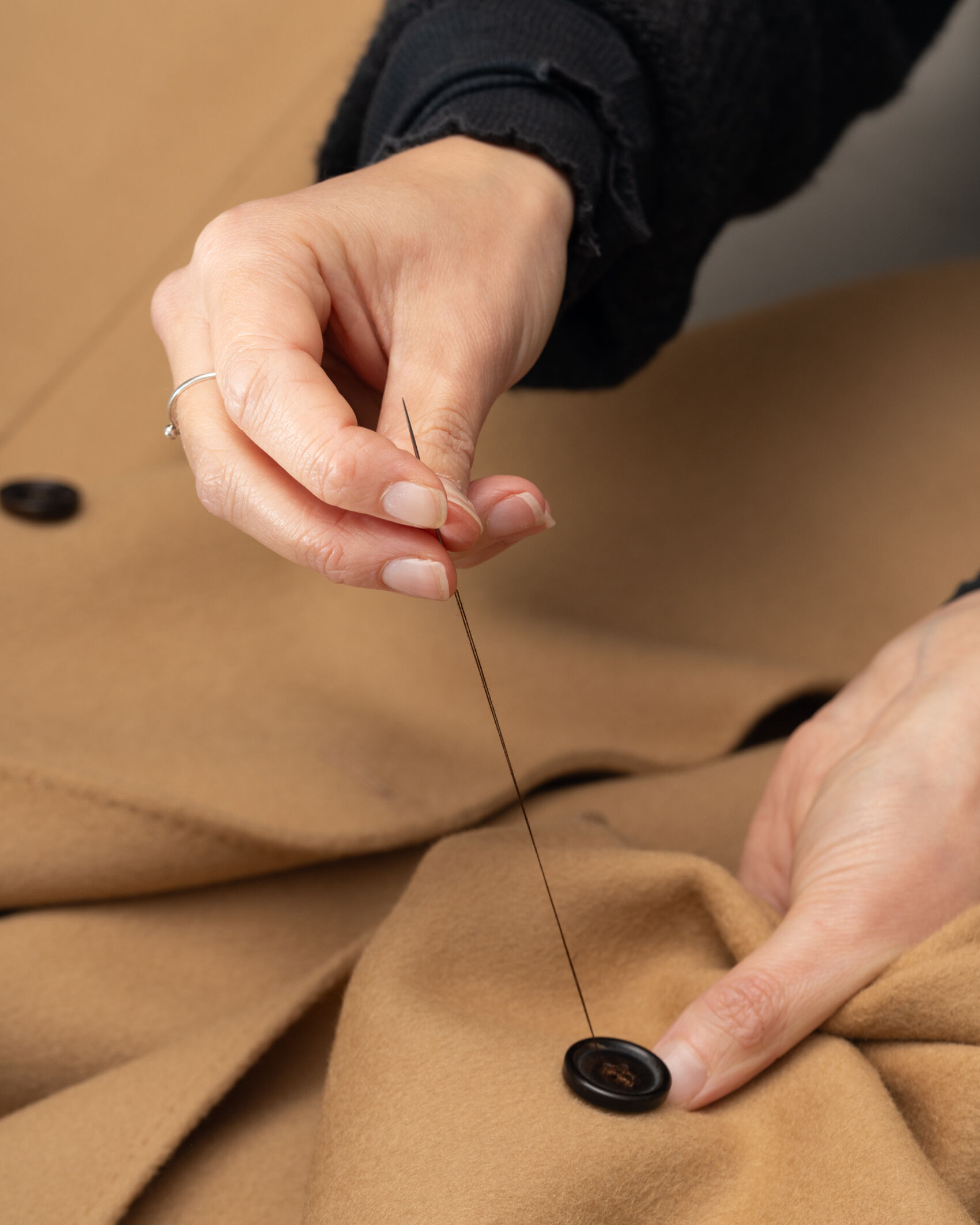
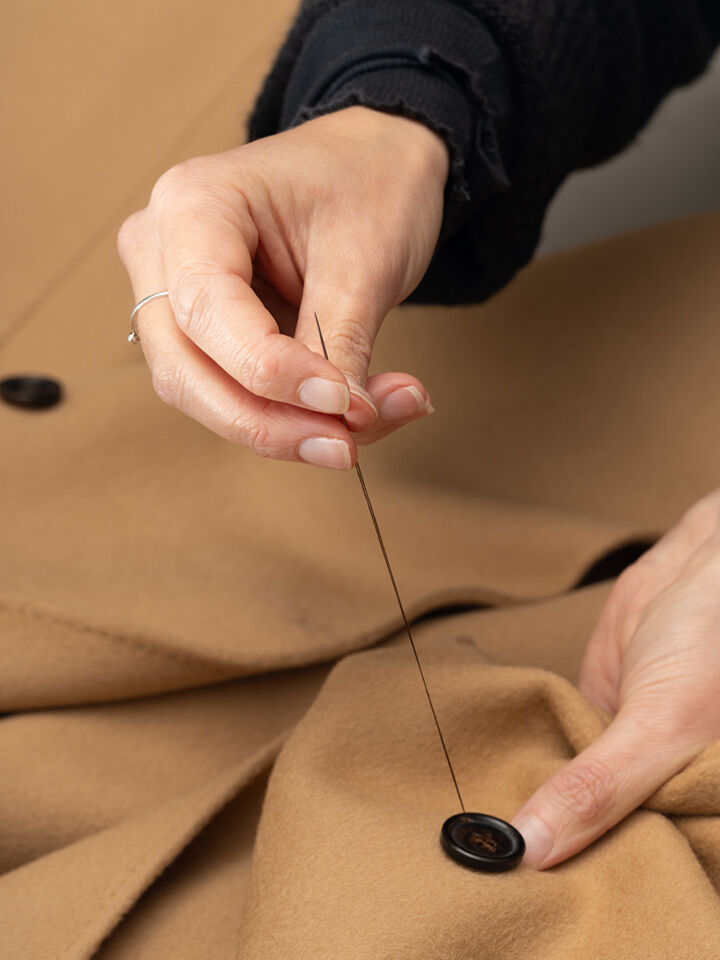
Preowned is our online marketplace in Sweden where you can sell and shop second hand Filippa K pieces. List your garments for cash or store credit, or discover the unique pieces from past and current seasons.
For customers outside of Sweden, use your local resale platform to give your used garments a new home.
Our Collect program has been in place since 2015, taking back garments to give them a second life and ensure they are taken care of responsibly. Garments that are fit for resale are donated to our local partners, and garments that are not in a condition to be reworn are sent to textile recycling.
If you live near a Filippa K store, you’re welcome to bring in unwanted Filippa K garments for credit towards your next purchase with us.

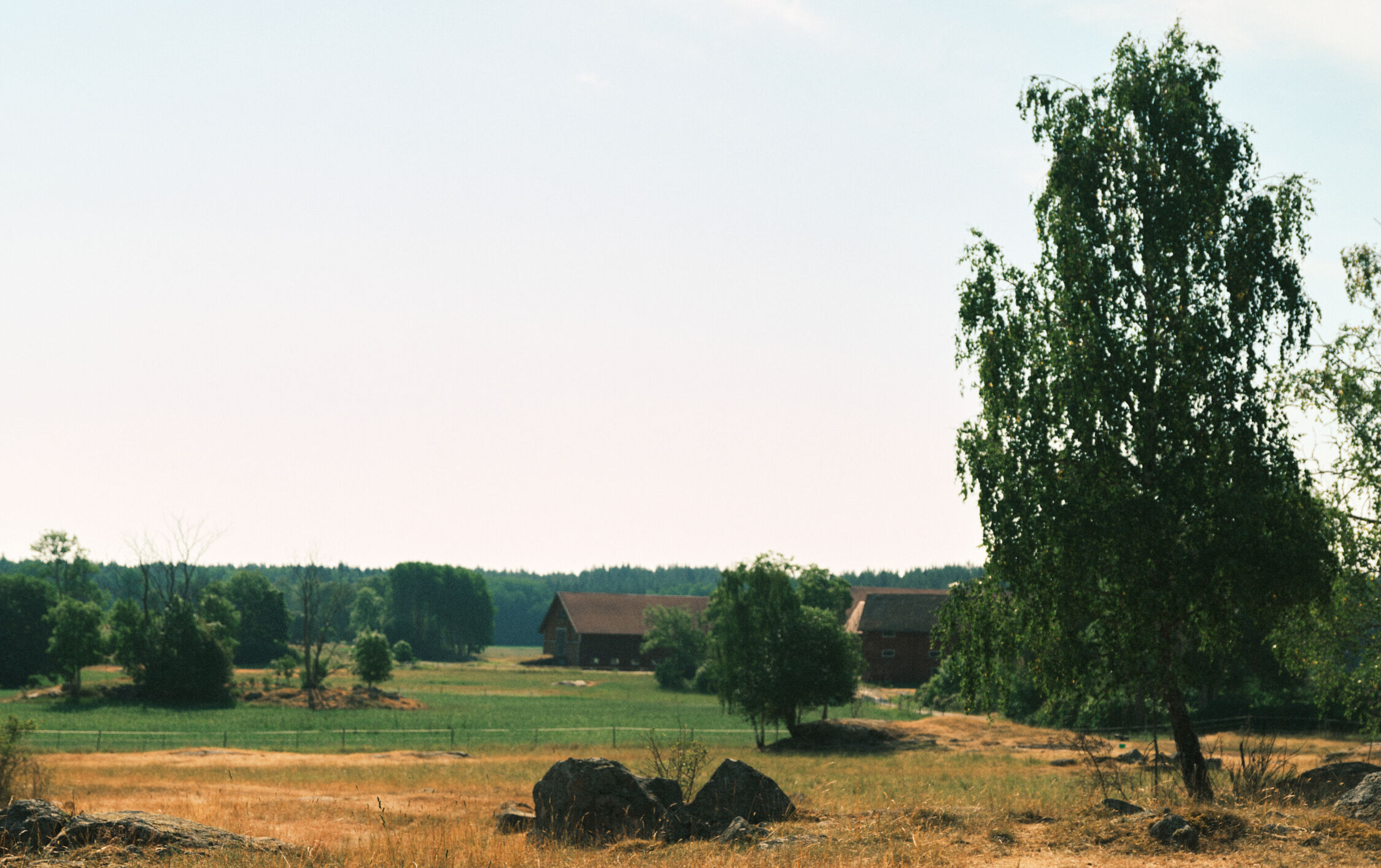
Every decision makes a difference. We measure our environmental impact with the aim of reducing it each year.
Fashion is one of the highest polluting industries, so we’re constantly working to reduce our environmental footprint.
Although our influence on the overall industry is small, we aim to make as big of a difference as possible by learning, exploring new solutions, and measuring the ways our decisions impact the planet.
Here’s what we’re working towards for 2030:
- 50% Greenhouse gas emissions reduction from a 2020 baseline
- We are recalculating this figure from our baseline year, but can currently report a 41% reduction between 2022 and 2023
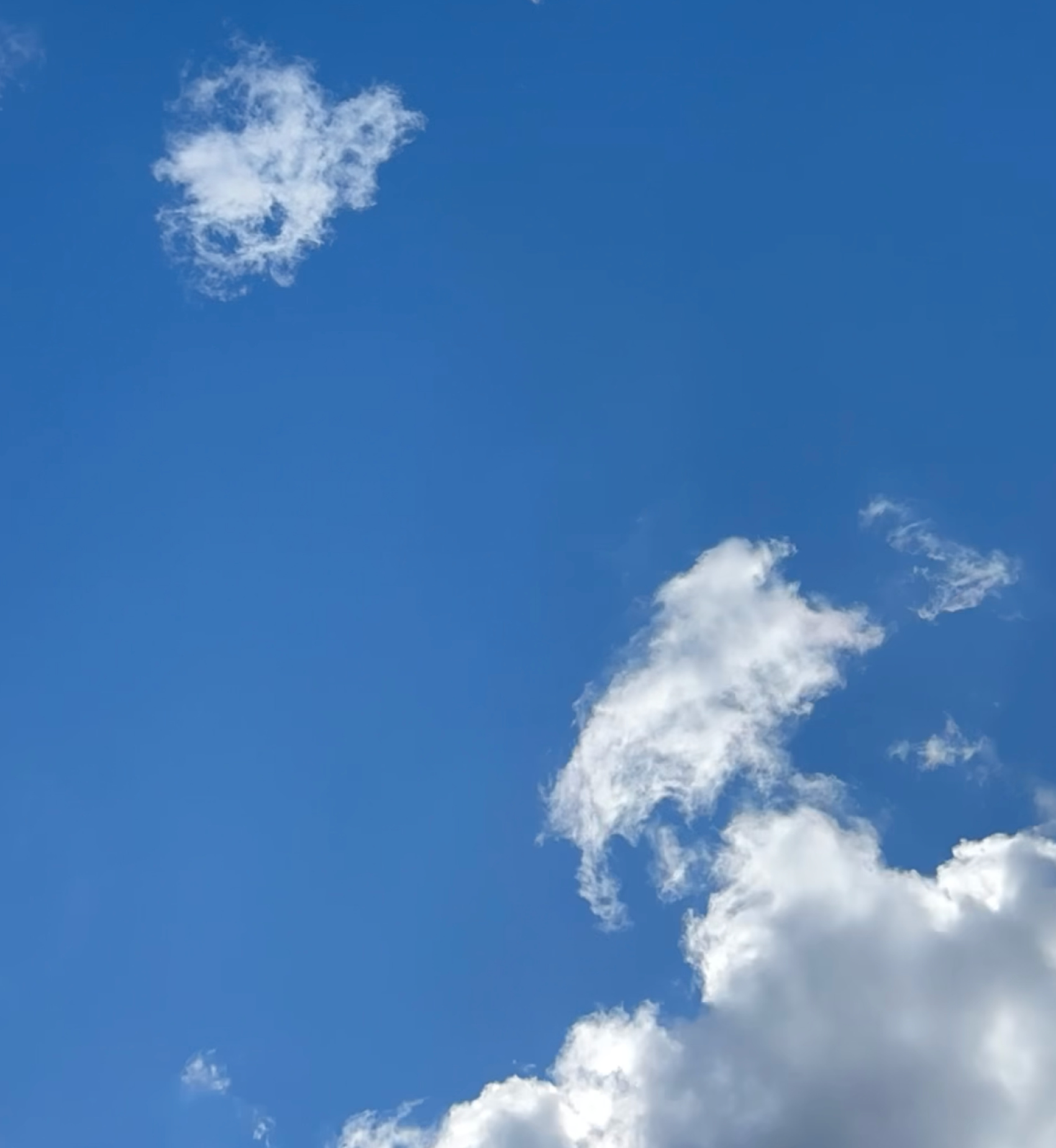
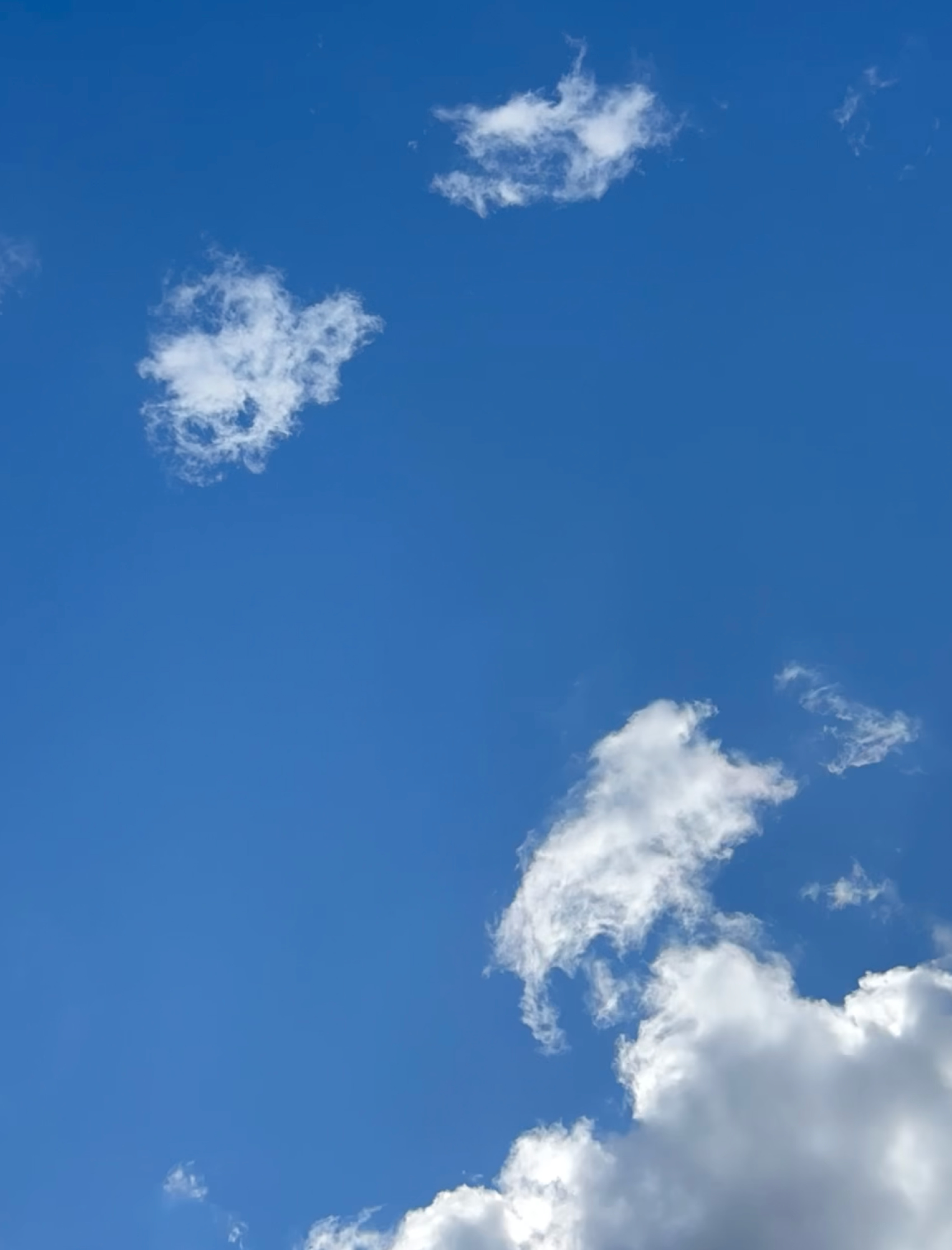
Filippa K has measured its emissions since 2021, changing methods between each year.
For the second year in a row we have collaborated with Plan A to calculate our emissions. We continuously work to increase supplier-specific data, but recognise that data availability is a key challenge for environmental data collection. This is something that we address with our traceability ambitions, aiming to collect more data from our suppliers and value chain operations.
We are currently reworking our calculations for our baseline year (2020); however we are proud to have achieved a 41% reduction on GHG emissions between 2022 and 2023. We acknowledge that this reduction was primarily driven by decreased purchases. While we celebrate progress, we also recognise that there's more work to be done.
LATEST FIGURES
In 2022, we partnered with Plan A to measure our carbon footprint. Our total emissions for 2023 was 4,663 CO2e*.
- 96% of our emissions came from our supply chain (scope 3). This is primarily from textiles (our material use through raw material extraction and energy use).
- 4% of our emissions are driven by heating and energy from Filippa K stores and our company headquarters (scopes 1 & 2).
*CO2e stands for carbon dioxide equivalent or CO2 equivalent. It’s a metric measure used to compare the emissions from various greenhouse gases.
Filippa K 2023 emissions per category
- 82% Purchased Goods & Services
- 6% Use Phase
- 5% Transportation
- 4% Other
- 3% Electricity & Heating
Beyond emissions, we work to reduce our impact in the areas of water usage, chemicals, and biodiversity.

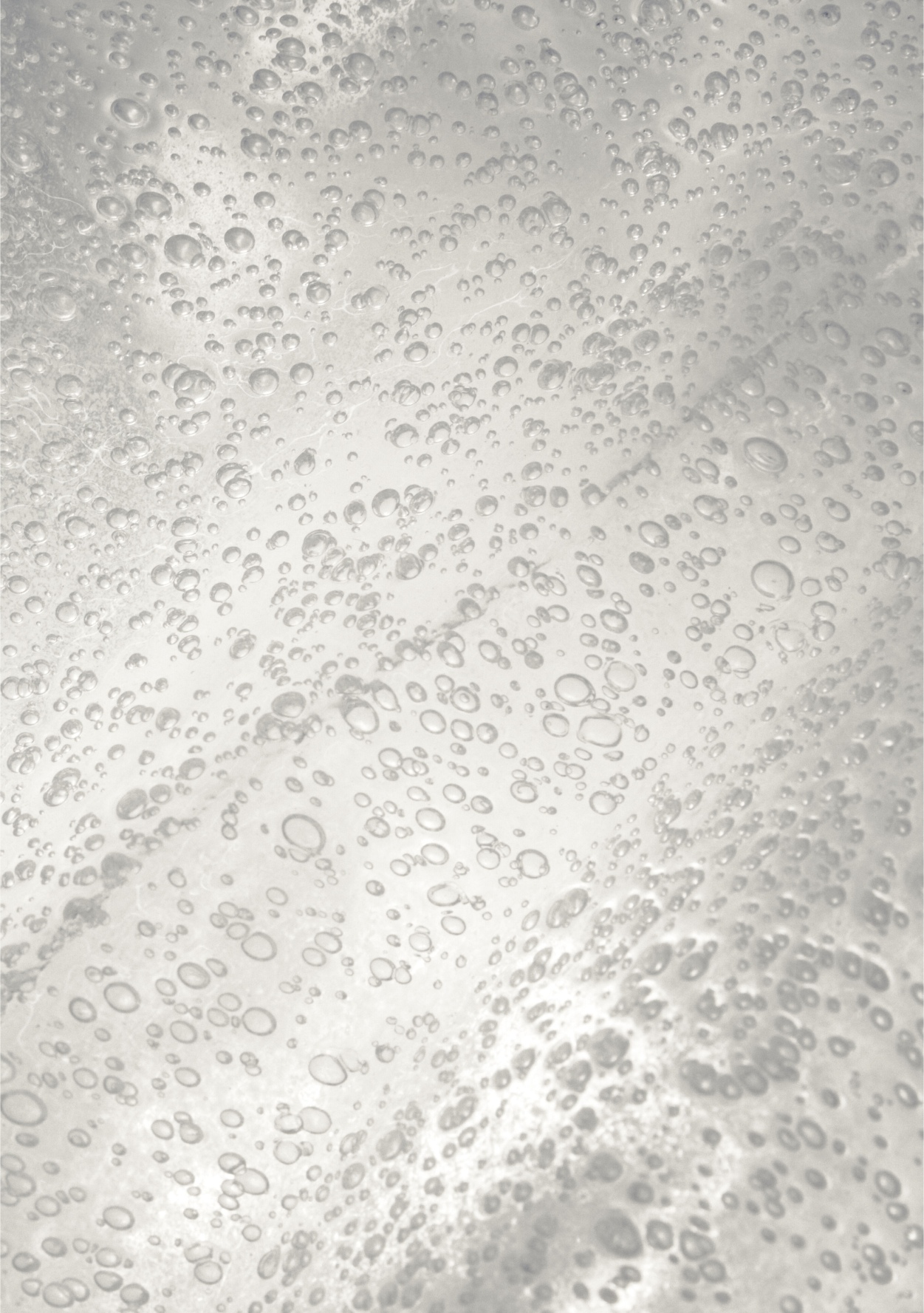
.png)
At Filippa K, it’s our responsibility to ensure the people within our supply chain are treated well.
We work towards fostering equal and long-term relationships with our suppliers, and aim to maintain regular contact and support to ensure healthy working conditions and wages.
Our average supplier relationship is 7 years, with some partnerships as long as 20+ years.
Here’s what we’re working towards for 2025:
of Tier 1 suppliers (product and garment makers) visited by Filippa K annually.
Current progress for 2023: 24%

You can only stand up for and protect your rights if you’re aware of them, therefore education for our suppliers is key to us improving labour rights.
HUMAN RIGHTS DUE DILIGENCE
We’re actively reviewing and assessing all of our policies and processes regarding human rights, preparing for the upcoming European human rights due diligence directive (HRDD). We’ve created a risk assessment which includes both countries and factories, where human rights risks regarding code of labour practices are assessed in all sourcing countries. We are working towards increasing the risk assessment process across the whole supply chain.
HUMAN RIGHTS PILLARS:
Protect
We protect human rights in our supply chains through communication, risk assessment and regular audits.
Respect
We respect human rights throughout our supply chain by fostering equal and long-term partnerships and supplier contracts.
Remediate
We proactively resolve issues that arise within our supply chains and support our partners in remediation.
Filippa K is a member of Fair Wear: a foundation that works with brands and industry influencers to support garment workers in realising their rights to safe, dignified, properly paid employment.
Fair Wear supports Filippa K by performing factory audits and annual performance check-ups as well as developing reports and action plans. Since 2008 we’ve worked with them to secure good labour standards in our supply chains, and to continue maintaining high compliance with the Filippa K Code of Conduct and international regulations.
In 2023 Filippa K participated in Fair Wear's pilot project, The Academy. This initiative aims to guide industry brands in implementing Human Rights Due Diligence (HRDD) in their supply chains, setting a high standard for human rights practices. As a Fair Wear member brand, Filippa K is contributing to the development of the project which offers guidance, learning modules, and tools to support HRDD across the industry. During this pilot year, there was no annual Fair Wear Brand Performance Check, and no performance benchmarking for 2023 will be provided. More details can be found on Fair Wear´s website.

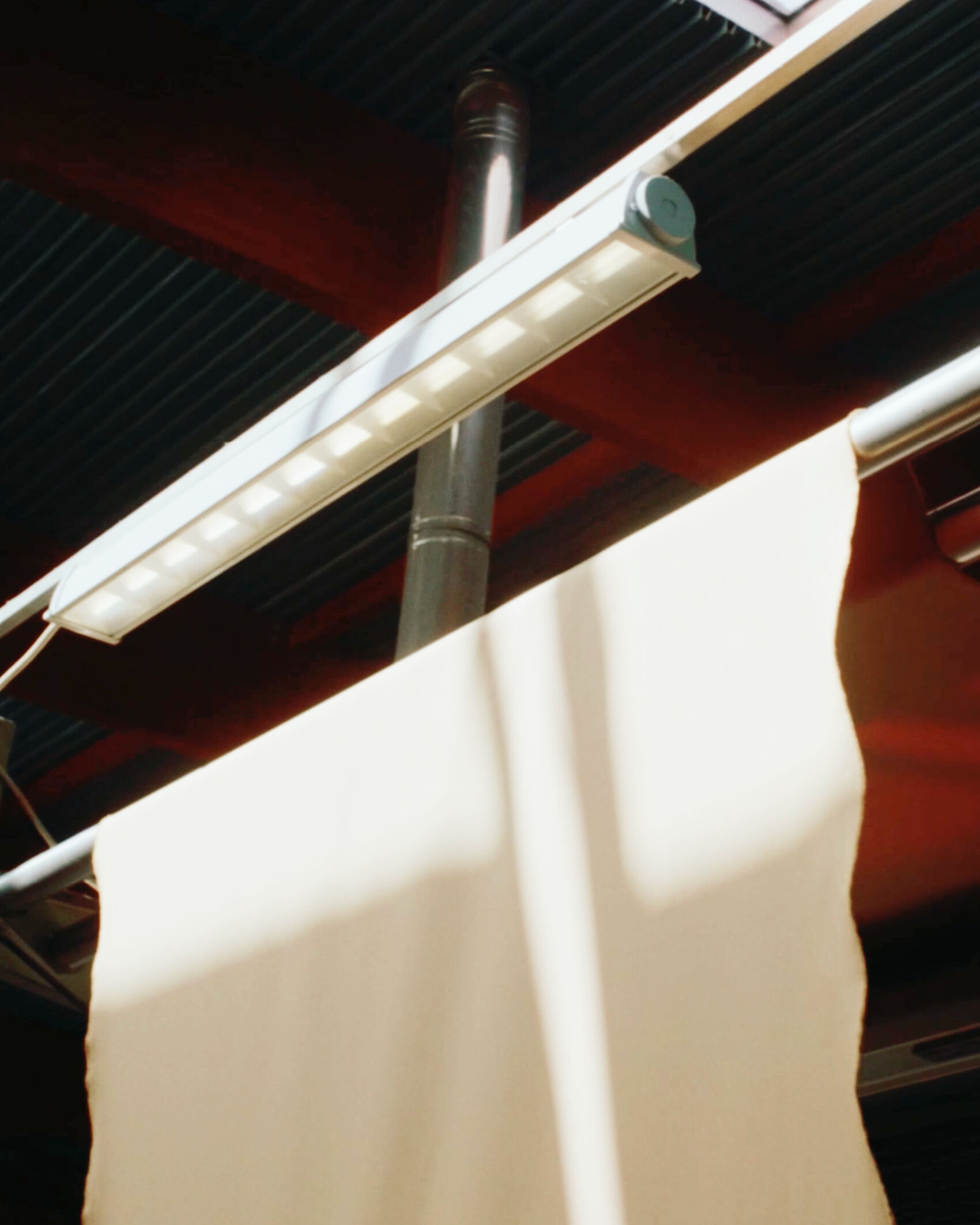
These are the eight elements of labour practices upheld by the Fair Wear Foundation, based on labour standards by ILO (International Labour Organisation):
EMPLOYMENT IS FREELY CHOSEN
No use of forced labour in the supply chain, including bonded or prison.
FREEDOM OF ASSOCIATION AND THE RIGHT TO COLLECTIVE BARGAINING
All employees have the right to form and join trade unions, which will not be subjected to discrimination. Collective bargaining will be recognised and respected.
NO DISCRIMINATION IN EMPLOYMENT
Recruitment, wage policy, admittance to training programs, employee promotion and termination policies, retirement, and any other aspect of the employment relationship will be based on the principle of equal opportunities. This is regardless of race, nationality, sex, gender, religion, political affiliation, union membership, social origin, deficiencies or handicaps.
NO EXPLOITATION OF CHILD LABOUR
There will be no use of child labour in the supply chain.
PAYMENT OF A LIVING WAGE
Wages and benefits paid for a standard working week will meet, at the least, the legal or industry minimum standards to ensure it covers basic needs and provides some discretionary income. Employees will be clearly informed about their wages, including rates and payment periods.
REASONABLE HOURS OF WORK
Hours of work will comply with the applicable laws and industry standards, not regularly exceeding 48 hours per week. Employees will have at least one day off per week. Overtime will be voluntary, not occurring regularly, and will always be compensated at a premium rate.
SAFE AND HEALTHY WORKING CONDITIONS
A safe and hygienic working environment will be provided, following industry best practices to address specific hazards and implement effective regulations that prevent accidents and minimize health risks. Any form of abuse, threat or harassment by the employer is strictly prohibited.
A LEGALLY BINDING EMPLOYMENT RELATIONSHIP
Employers will meet the requirements set under labour or social security laws, and the regulations relating to the regular employment relationship. Younger workers will be given the opportunity to participate in education and training programmes.


The people behind our products matter. We’re proud of our supply chain partners, and strive to foster healthy working conditions and long-term relationships.